Best rugged phone of 2025
From drop tests and battery life to performance benchmarking, we tested the best rugged phones for durability and work
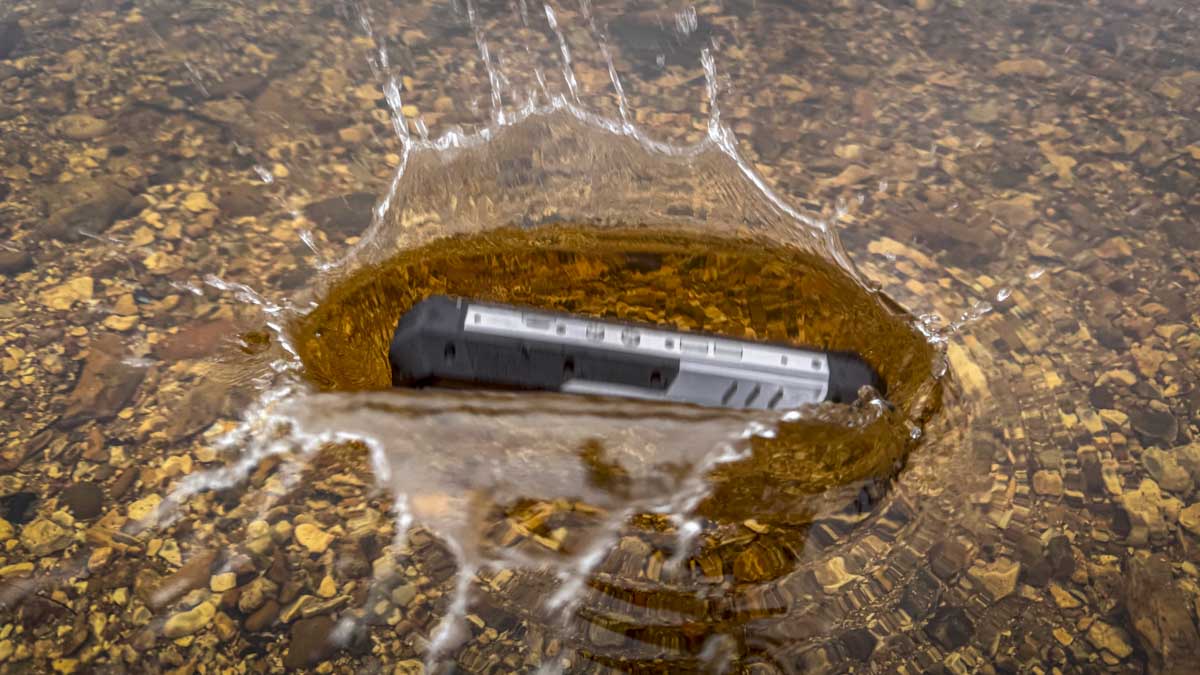
The best rugged phones are designed for extreme durability, long battery life, and reliable performance in harsh environments. Whether you’re working in construction, exploring the great outdoors, or just need a phone that can withstand drops, dust, and water, we’ve tested and reviewed the best rugged smartphones on the market.
Alongside smartphones, our team of expert reviewers have tested best rugged laptops and best rugged tablets for camping, hiking, and working on-site. The Oukitel WP30 Pro is our top choice best rugged smartphone for most people. The IP68/IP69K-rated, MIL-STD-810G-certified Android phone holds the best all-around rugged features for general use. For a budget alternative, check out the Fossibot F102. It's not the most durable or robust smartphone you'll find, but it's available at a fair price for the features on offer.
We've rounded up our pick of the best rugged phones, comparing specs and IP ratings, testing performance and operation, and conducting our own drop tests to see which ones can handle the pressure.
For more durable devices, we also reviewed the best rugged hard drives.
Quick list
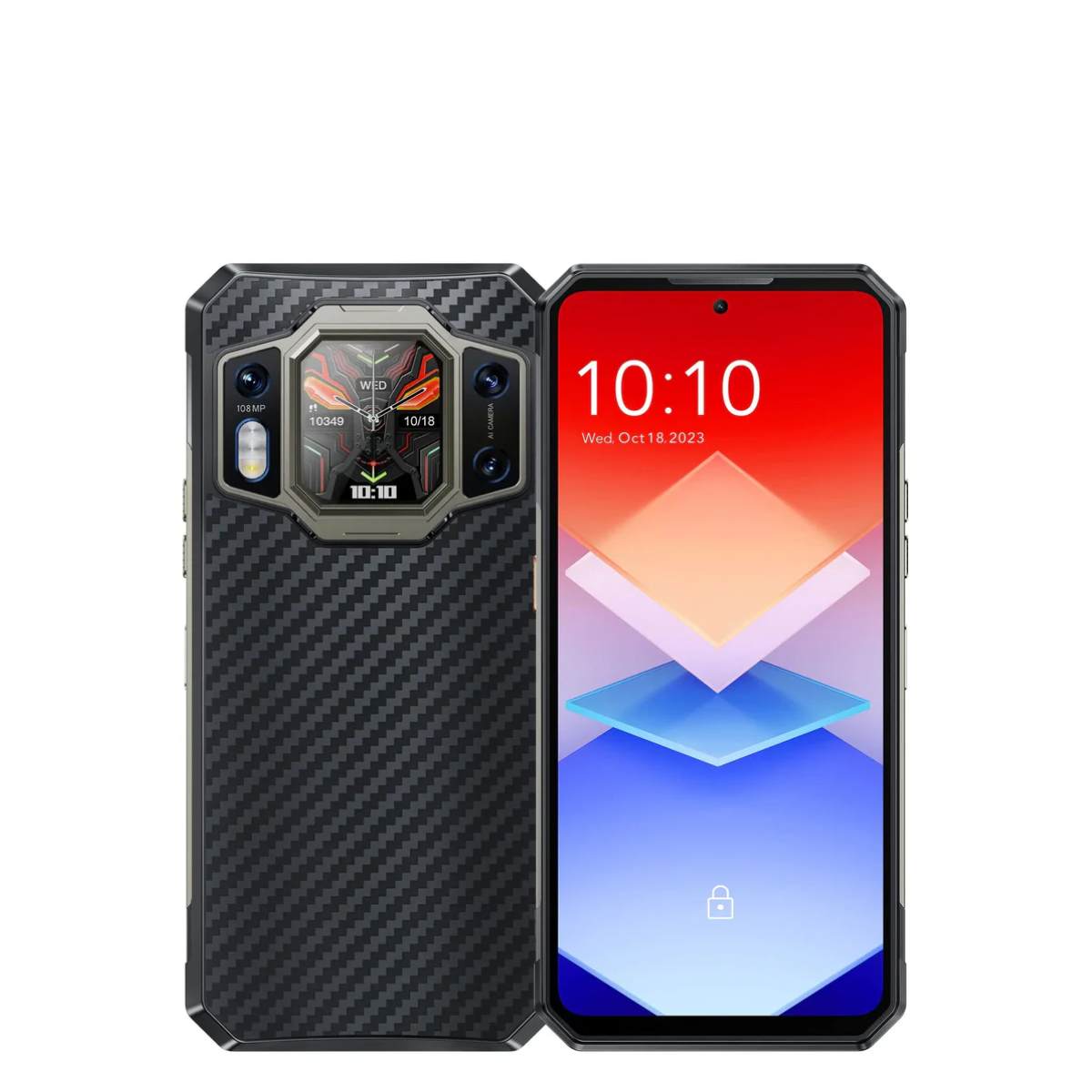
Best rugged phone overall
We really like this phone, which felt smooth and responsive during tests, and boasts a useful second screen to the rear, great cameras, a long-lasting battery, and one of the quickest phones to charge.
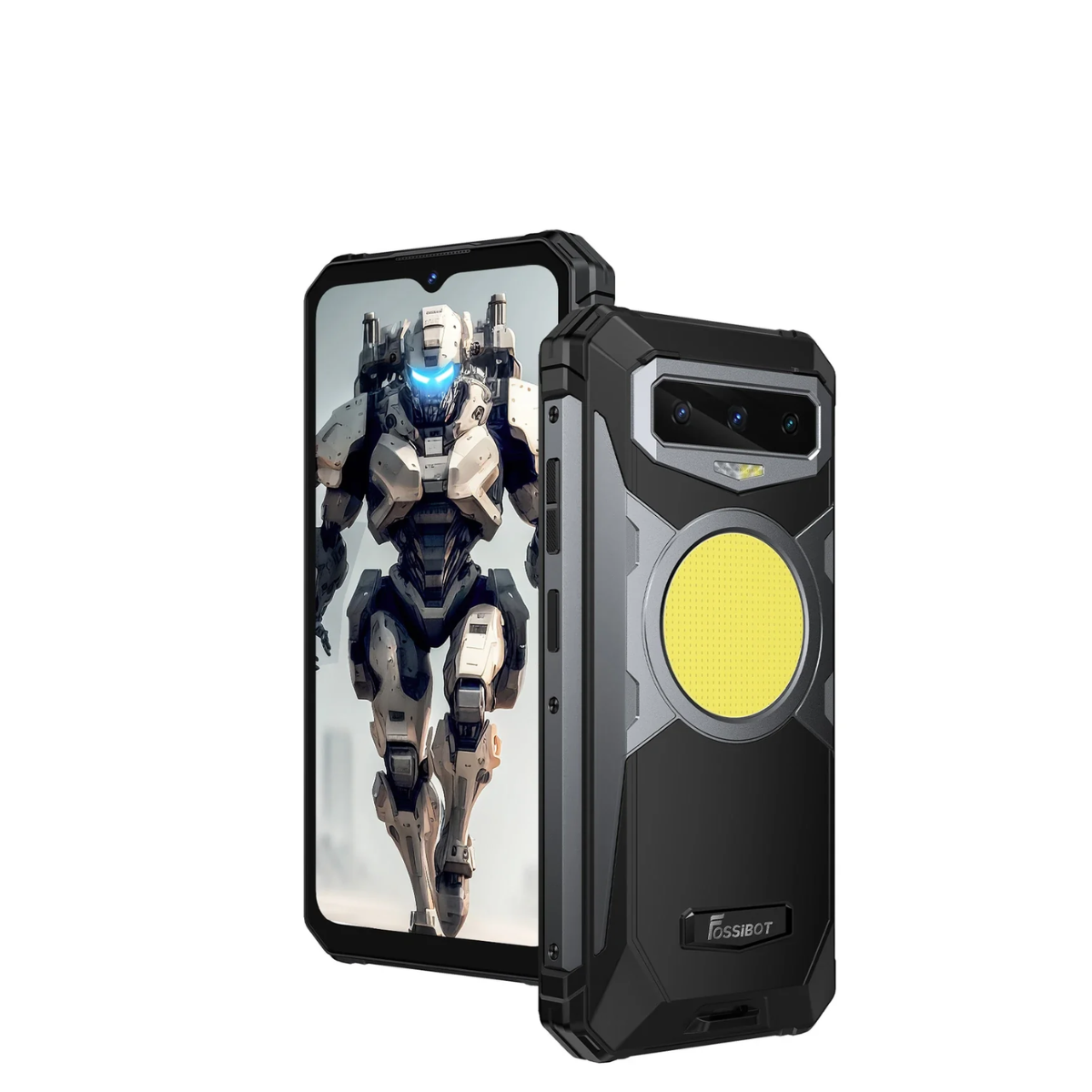
Best rugged phone on a budget
If you're looking for a reasonably priced durable smartphone, we were impressed with what you get with this device - one of the stand-out features for us was the 16,500mAh battery, which lasted several days in our tests.
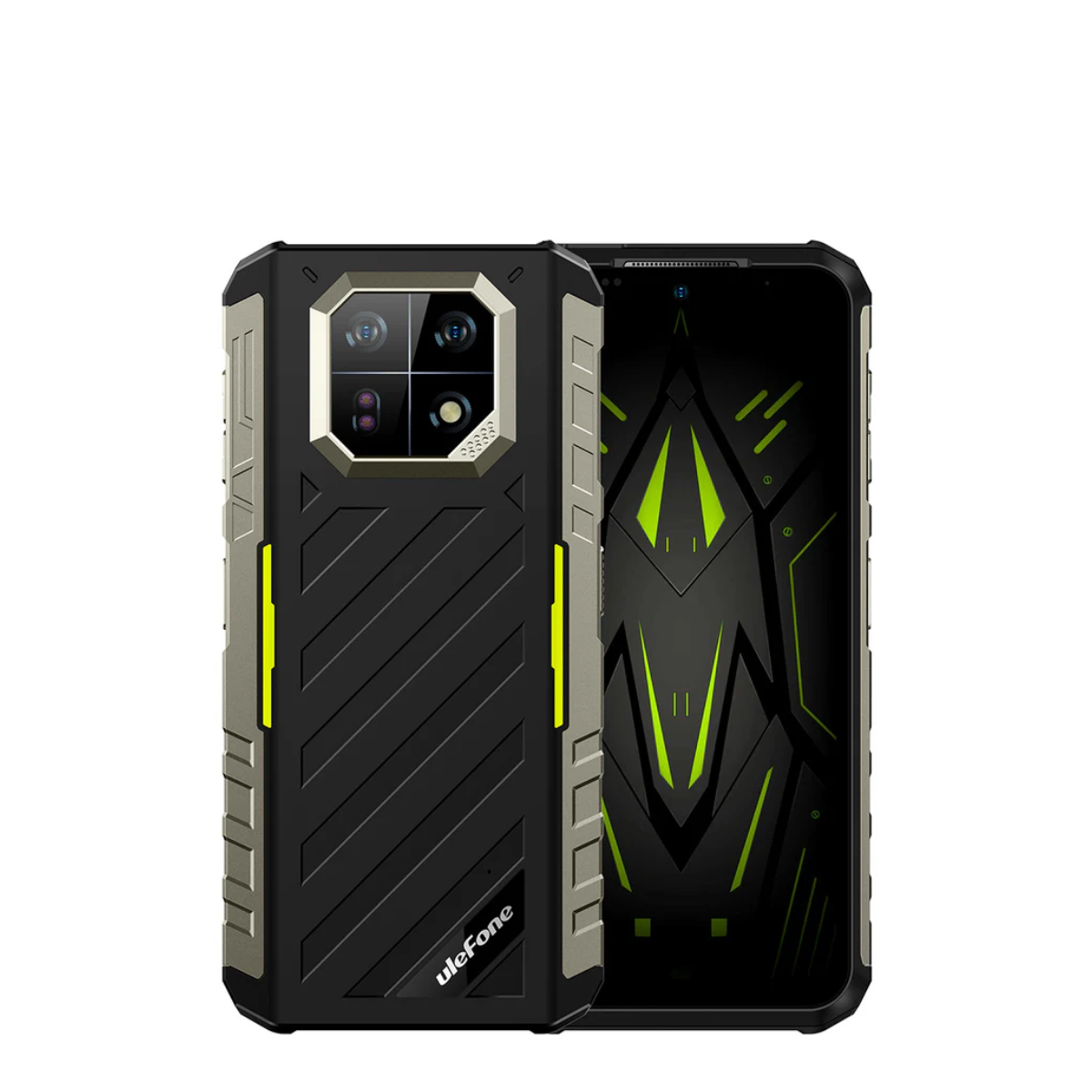
Best rugged phone for cameras
This ruggedized phone comes with a great camera array. To the rear, we were pleased to find both a 64MP SONY IMX686 camera and 64MP Omnivision OV64B Night vision. On the front, you'll find a 8MP Omnivision OV8856 camera.

Best rugged phone for everyday carry
Need a phone that's rugged but not too chunky and heavy? Then this is our top pick - it's a nicely compact device that easily slips into the pocket, but won't weigh you down on-site.

Best rugged phone for EDC alternative
If the ThinkPhone 25 was available in the US, this would be my top recommendation. For everyone outside North America, this is a great rugged smartphone for business use, boasting a host of security features.
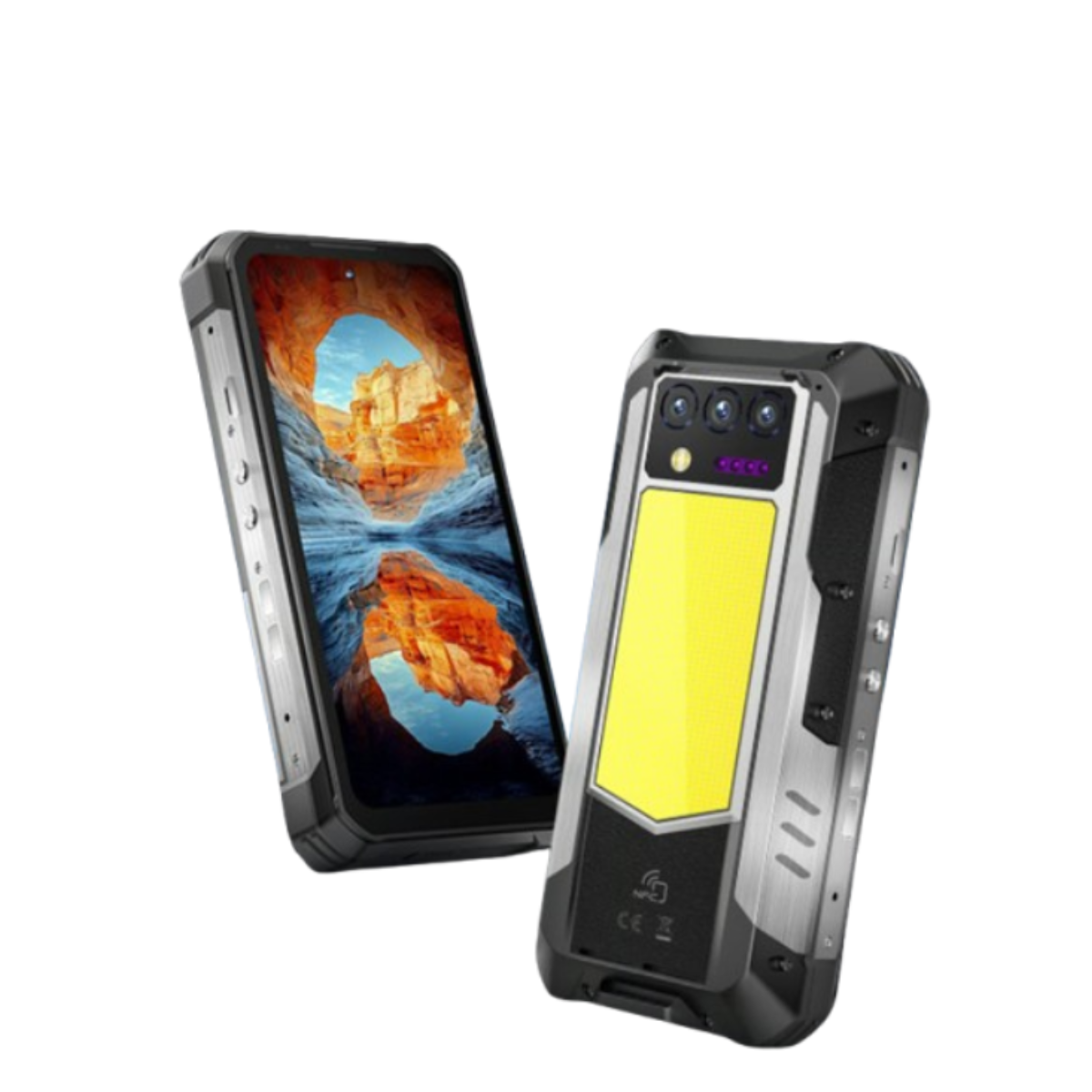
Best rugged smartphone for battery
Currently on Kickstarter, this durable phone is an absolute powerhouse, featuring a built-in projector, FM radio, camping light, and a huge 33,000mAh battery, which ranks as the longest-lasting phone battery we've ever tested.
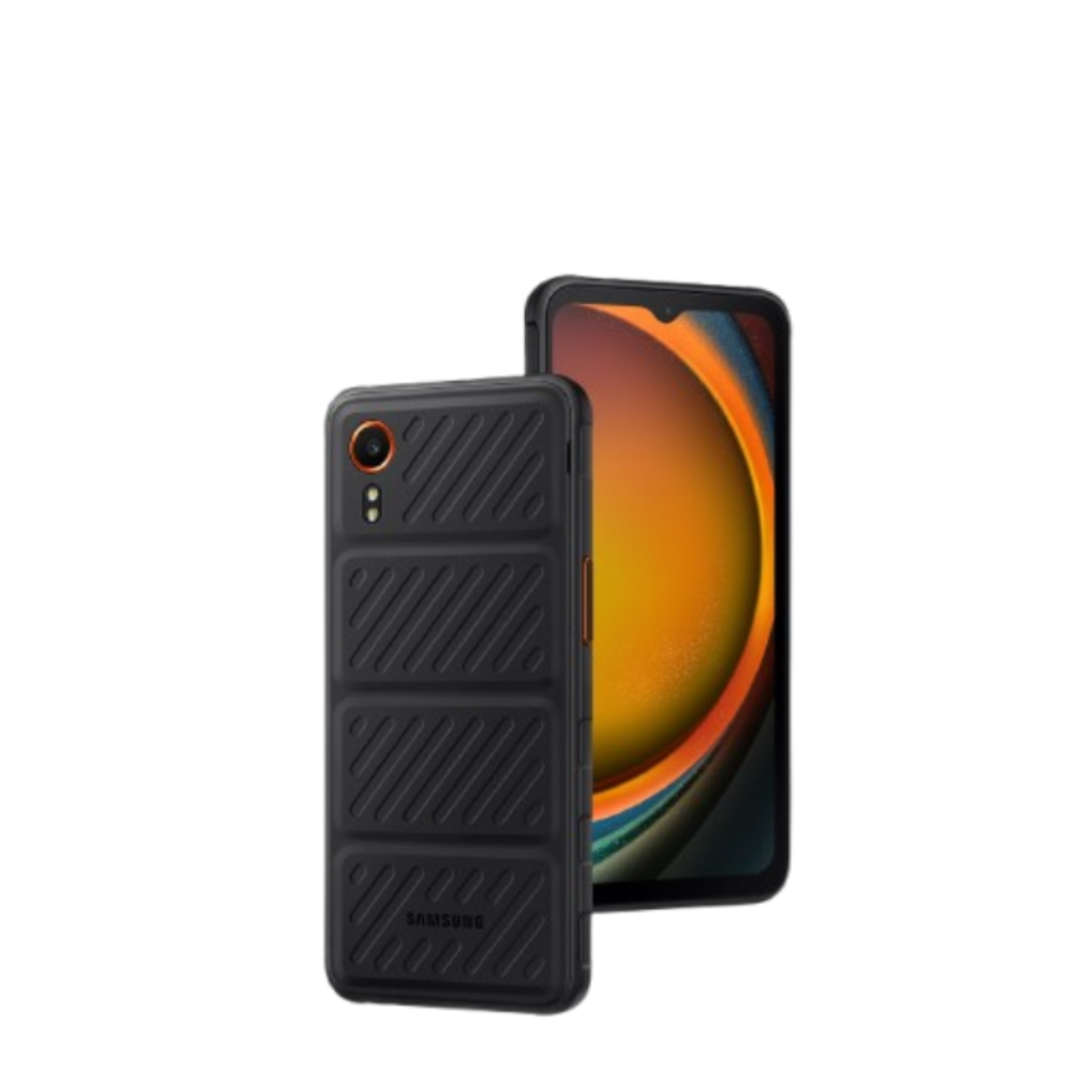
Best rugged phone with removable battery
There aren't many rugged phones with a swappable battery, but this is one - making it ideal for those who use their device a lot and need to be able to keep going without waiting for it to fully charge.
Best rugged phone overall
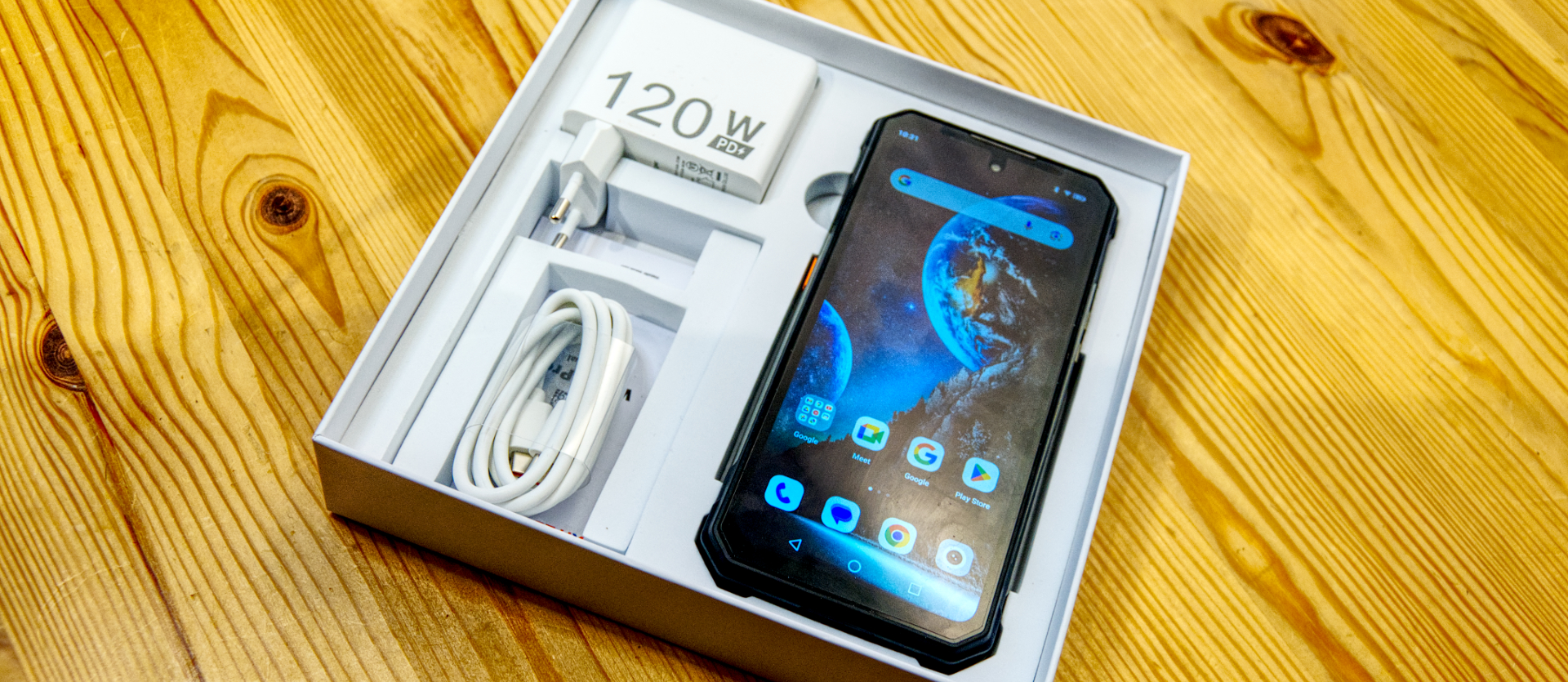
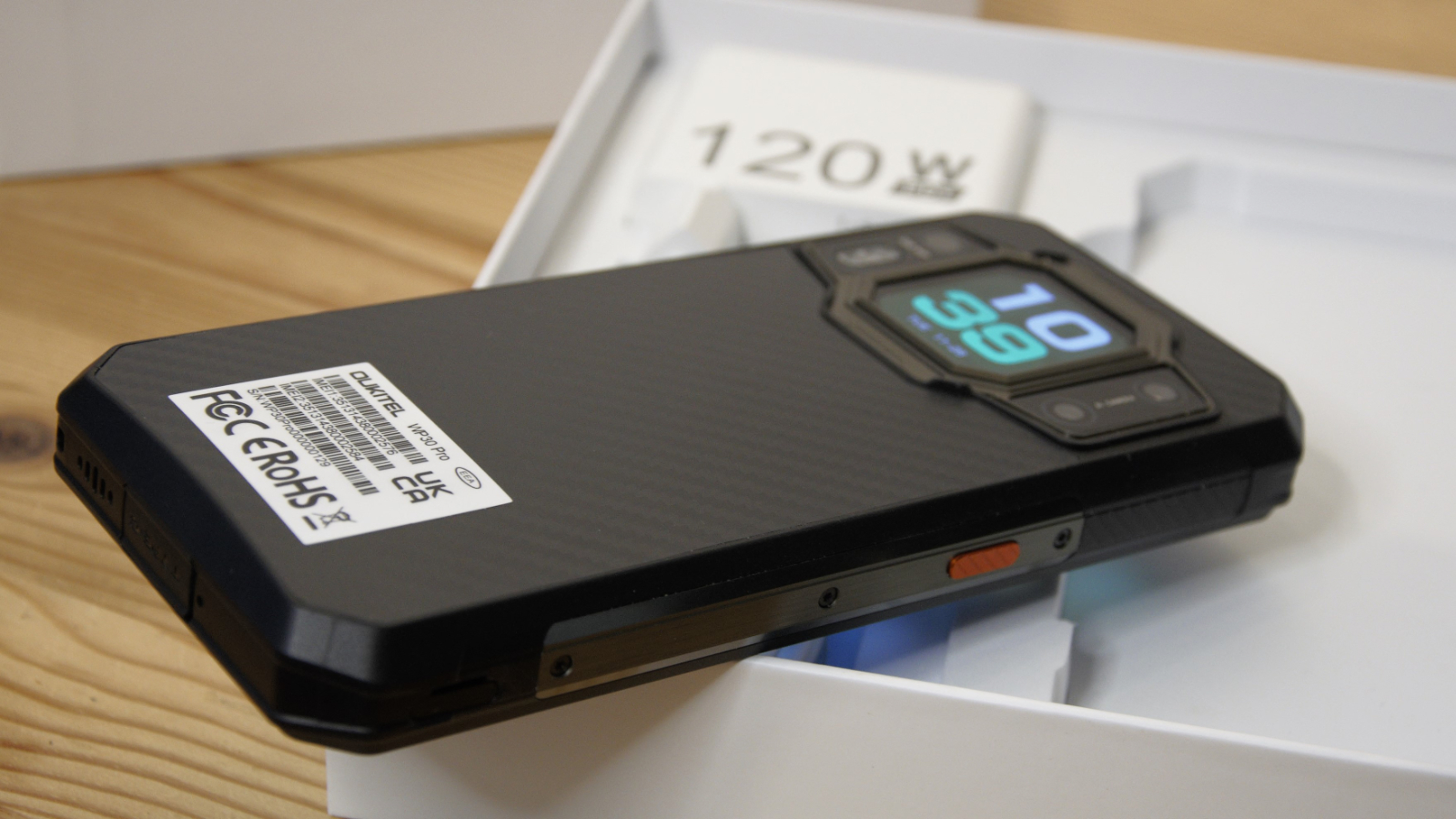
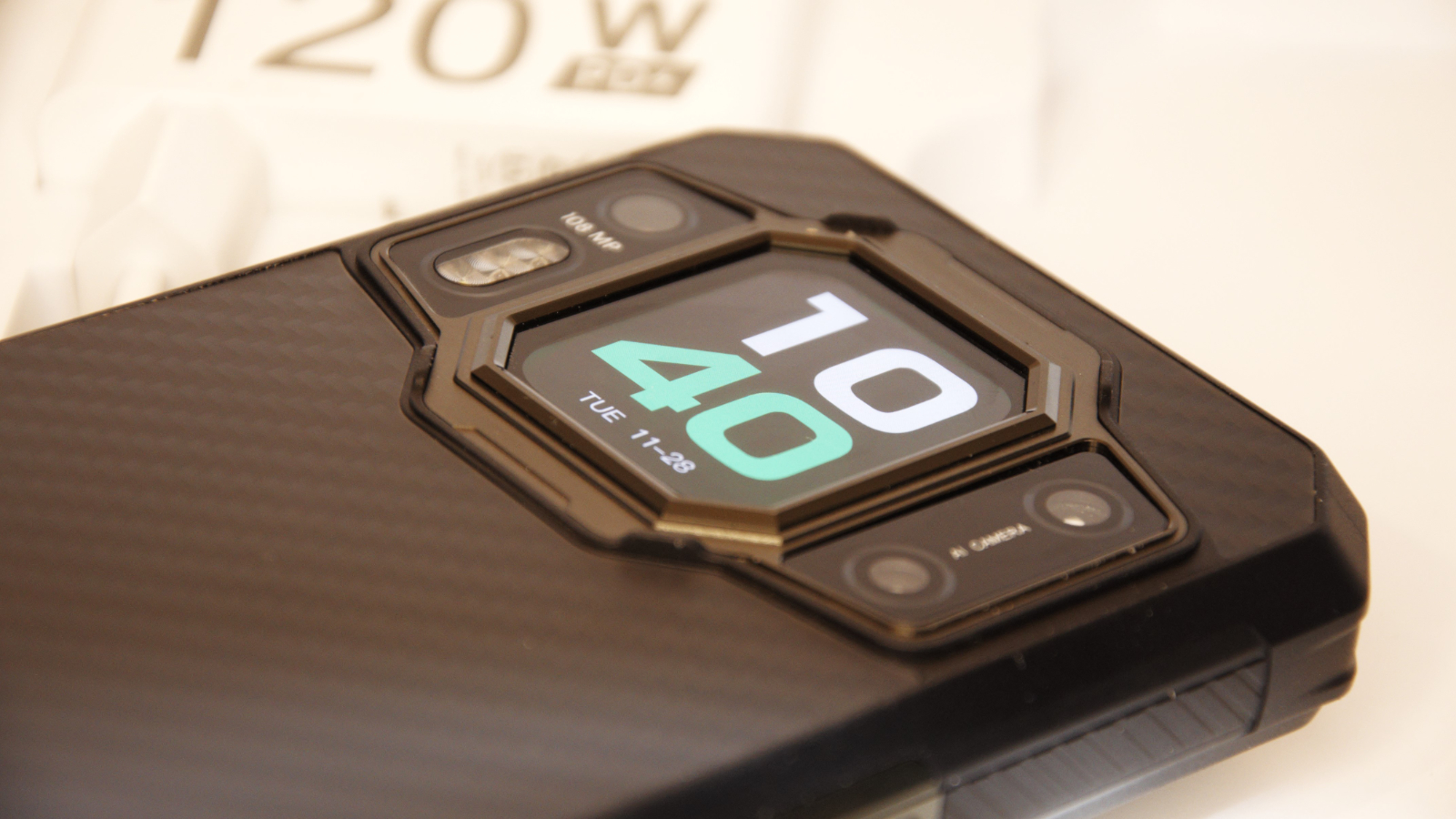

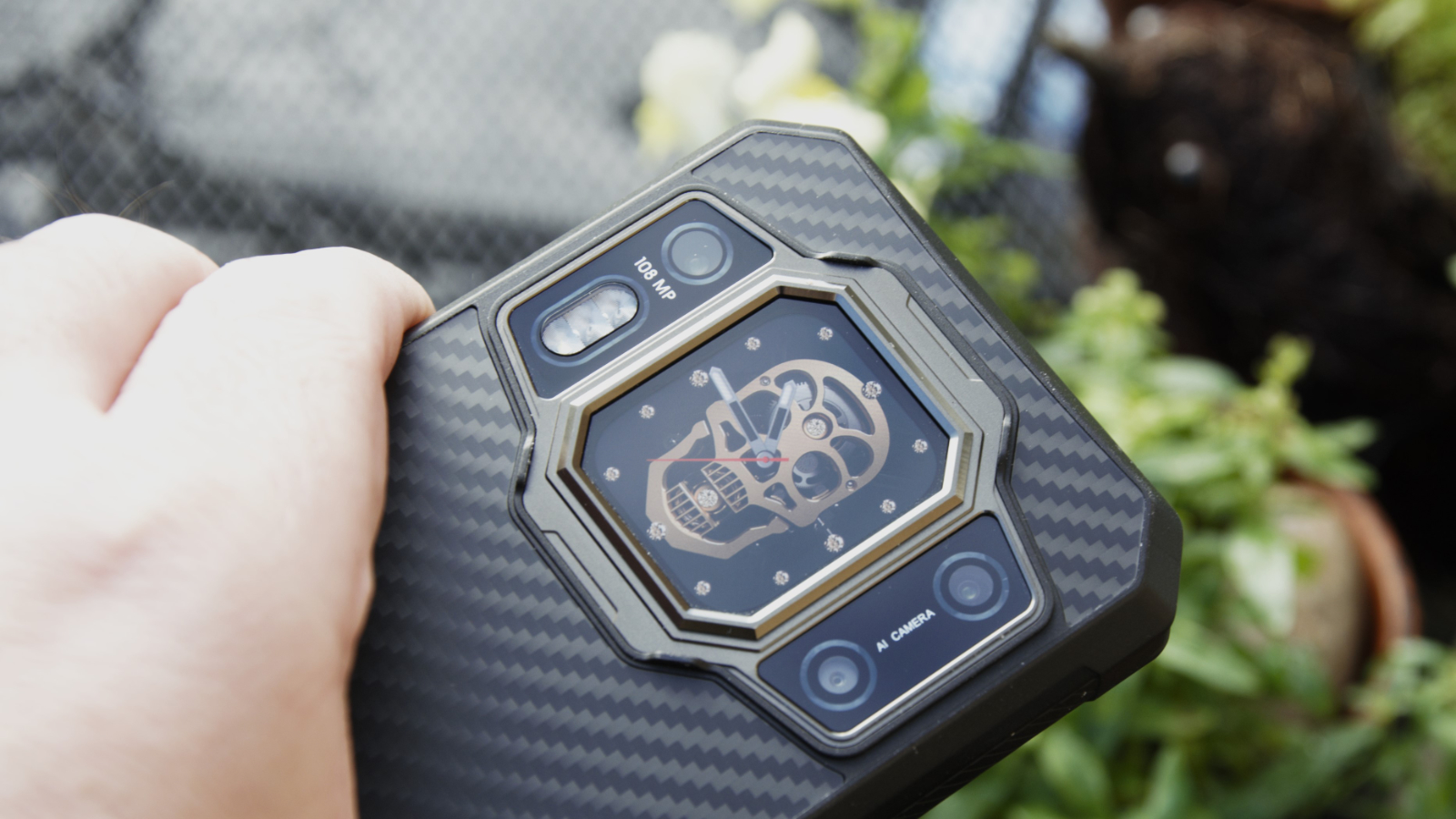

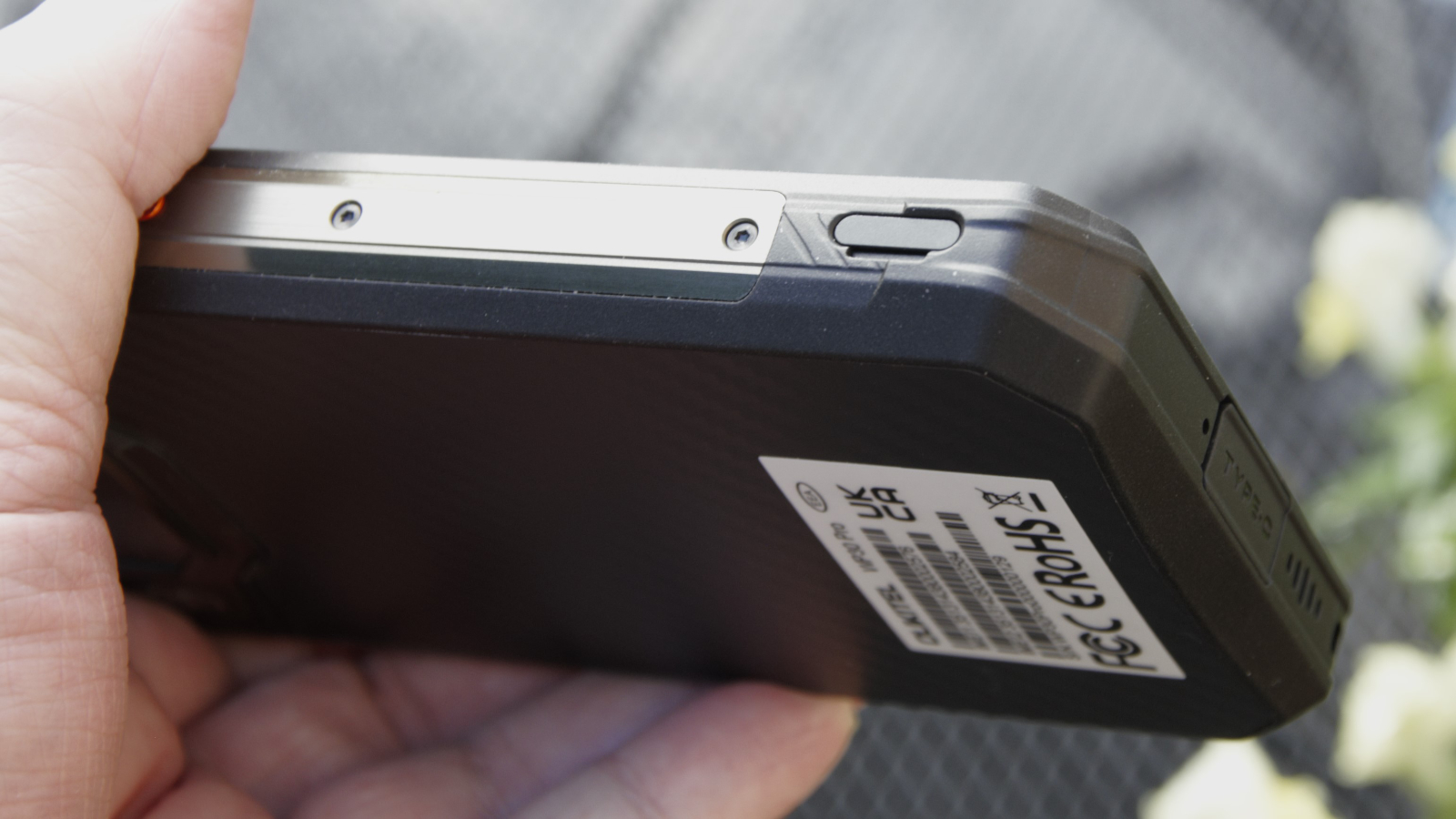
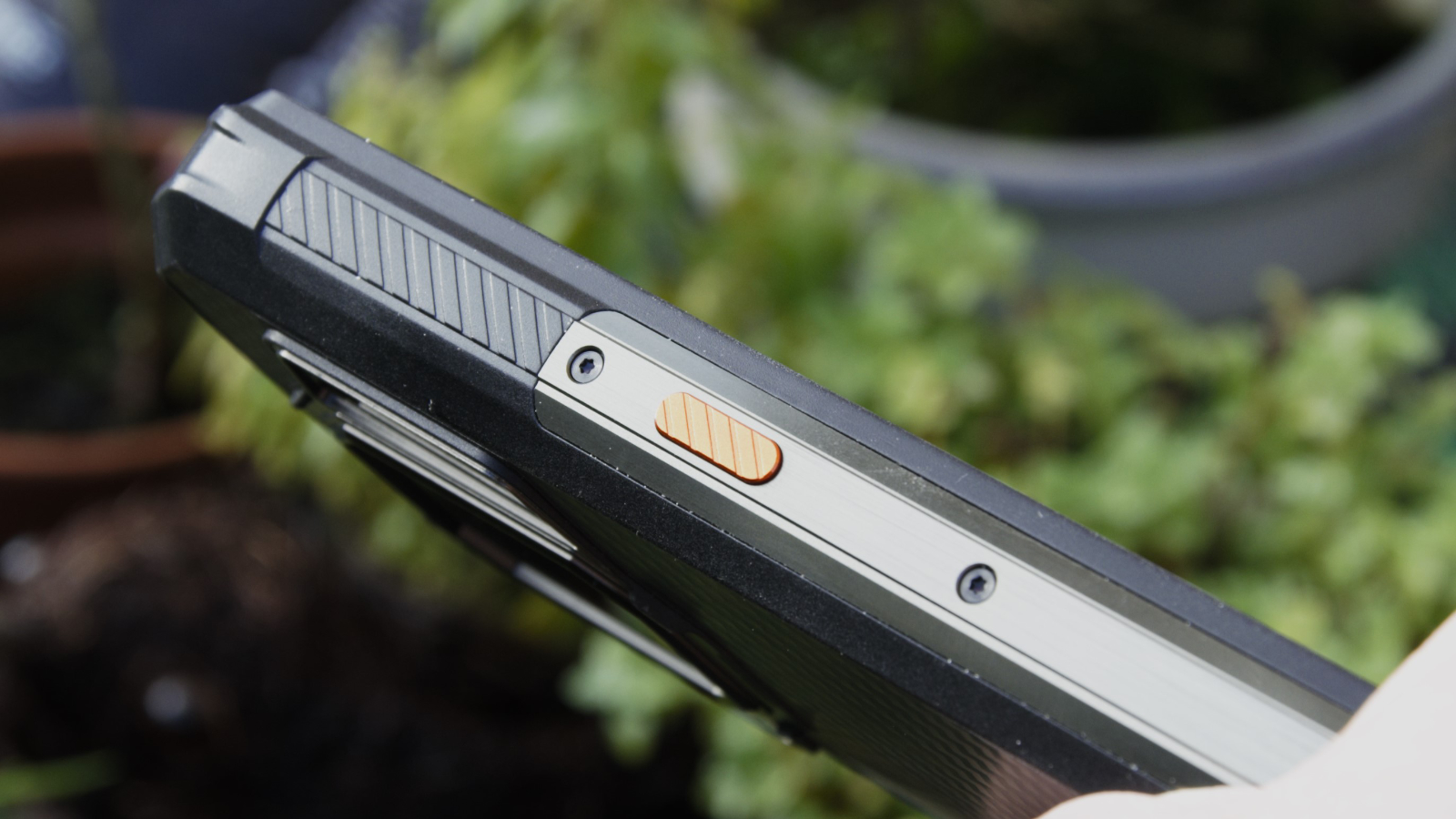
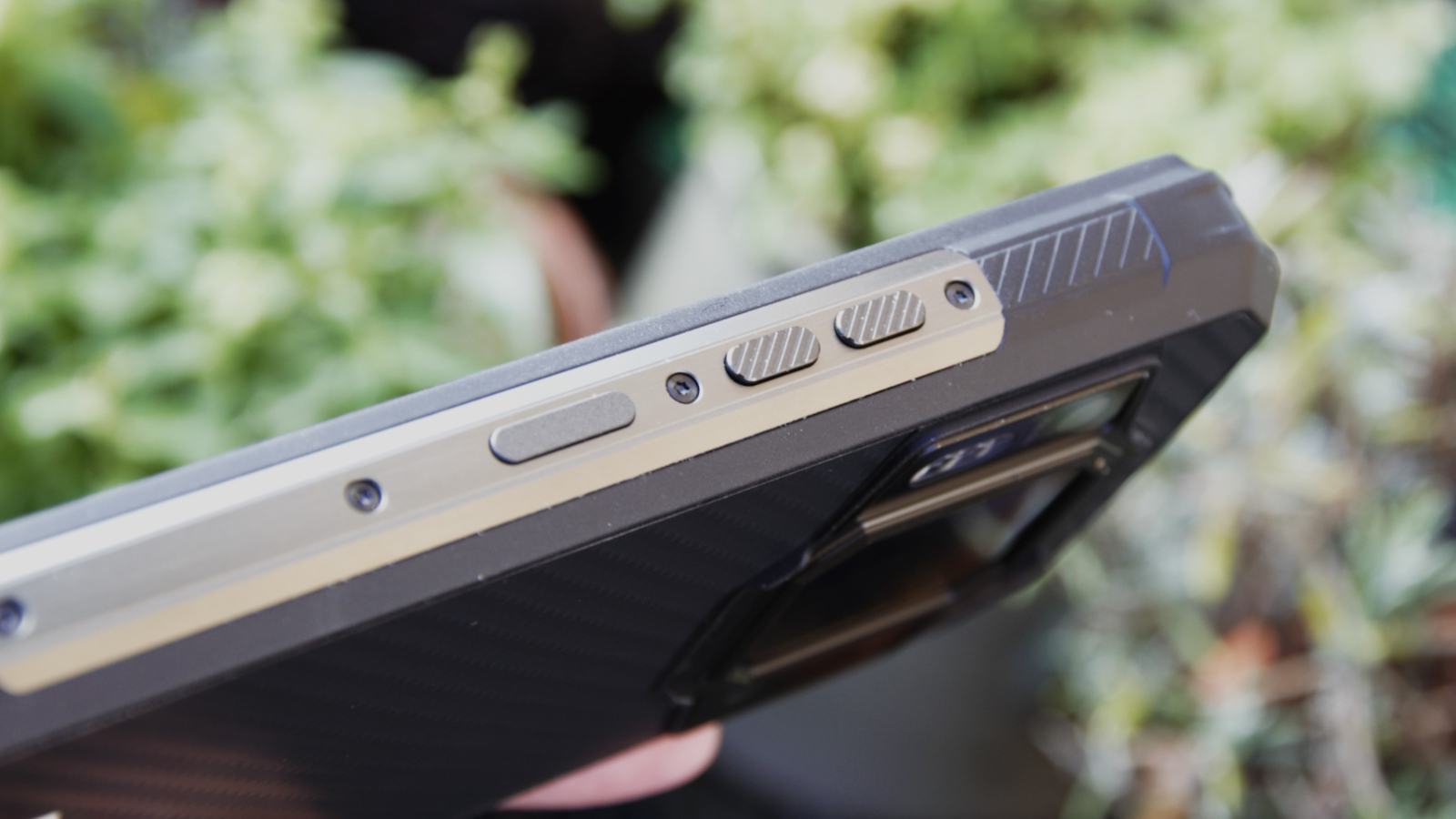
Specifications
Reasons to buy
Reasons to avoid
✅ You need a rugged phone with a secondary display: We really liked the rear display on this rugged phone, serving up quick notifications and controls.
✅ Fast charging is a priority: Ideal for those constantly using their phone in the field, this supports 120W, one of the fastest on the market.
❌ You prefer a slimmer, more compact phone: Due to the battery, we found this device to be relatively bulky.
❌ Wireless charging is essential for your workflow: Unfortunately, you won't find wireless charging on this device.
The Oukitel WP30 Pro Rugged Smartphone is a rugged powerhouse of a phone with a second screen, fast charging, a long-lasting battery, great cameras and durability, and some extra features that help me this our number one pick for most people. We know that many phones are getting stronger glass screens or more durable frames, but there is a big difference between having a phone that is a little more durable and a phone that is built for durability. The Oukitel WP30 Pro is built to last, even through extreme terrain or experiences.
The WP30 Pro model houses a sizeable 11,000mAh battery for heavy all-day use. For reference, the popular iPhone 16 Pro Max has a battery life of 4685mAh. This rugged smartphone is also one of the fastest-charging rugged phones we have seen, with up to 120W fast charging, meaning that when you finally need to charge, you won't need to charge for long, even with that massive battery.
Some other impressive features of the WP30 are the 120Hz FHD+ display, strong performance, night vision camera, IP68, IP69K, and MIL-STD-810H certified toughness, Dual SIM, 5G, integrated thermal imaging, fingerprint scanner, and facial recognition.
While this won't be the fastest smartphone you could pick up, nor is it the fanciest, it does have a lot of features that even the flagship smartphones don't have, all while being built for the field.
Read our full Oukitel WP30 Pro review.
Best rugged phone on a budget
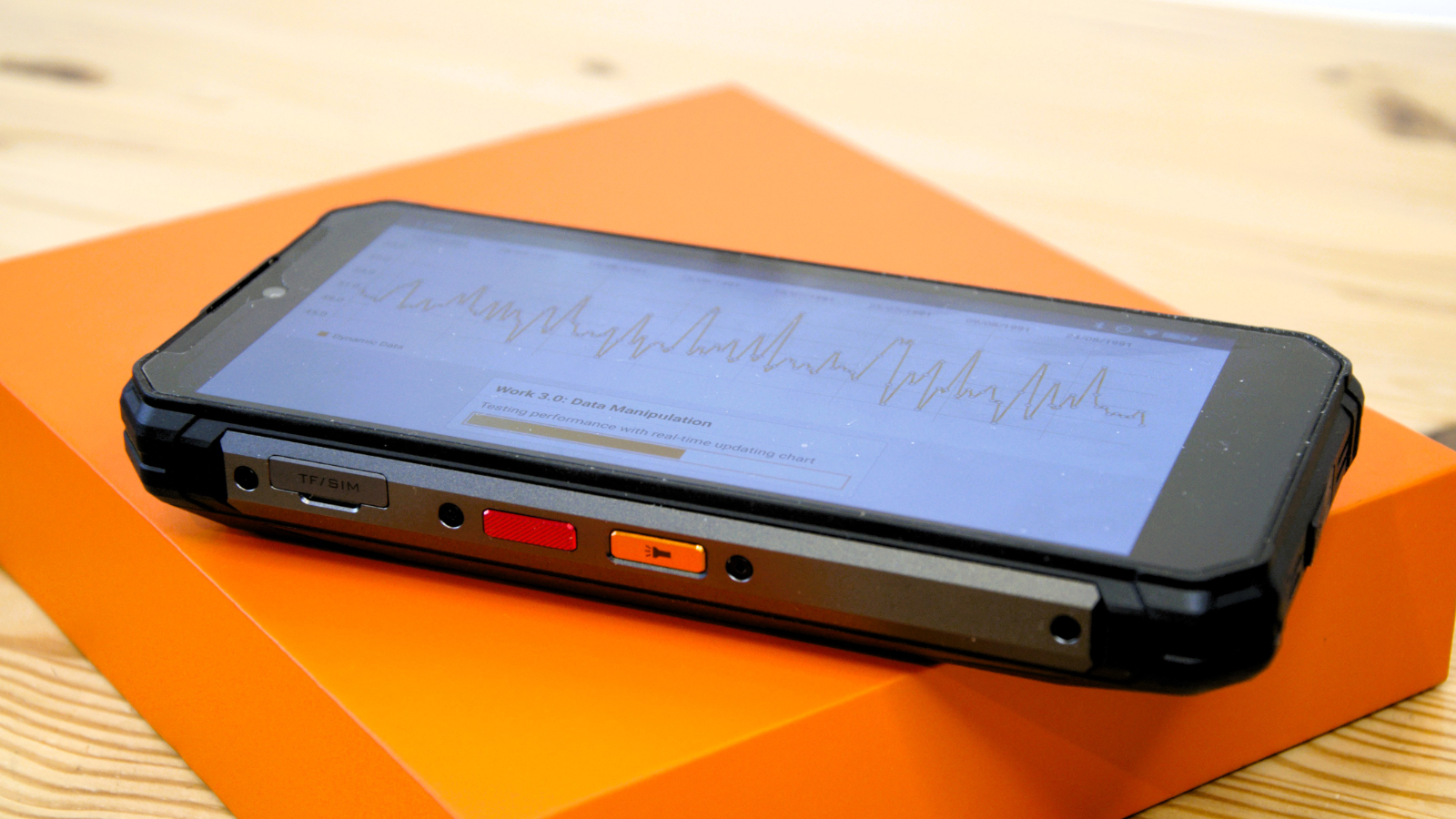
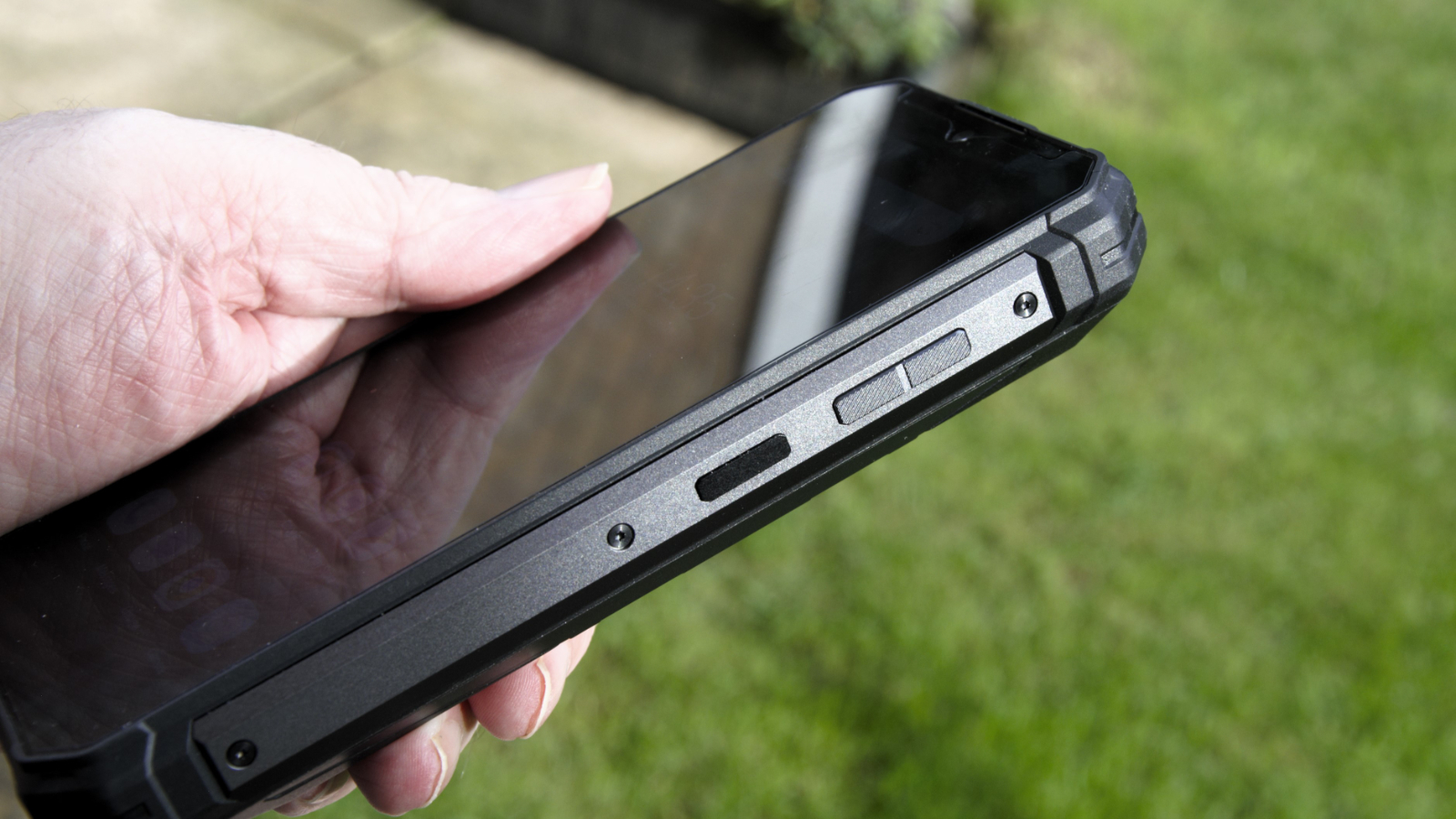
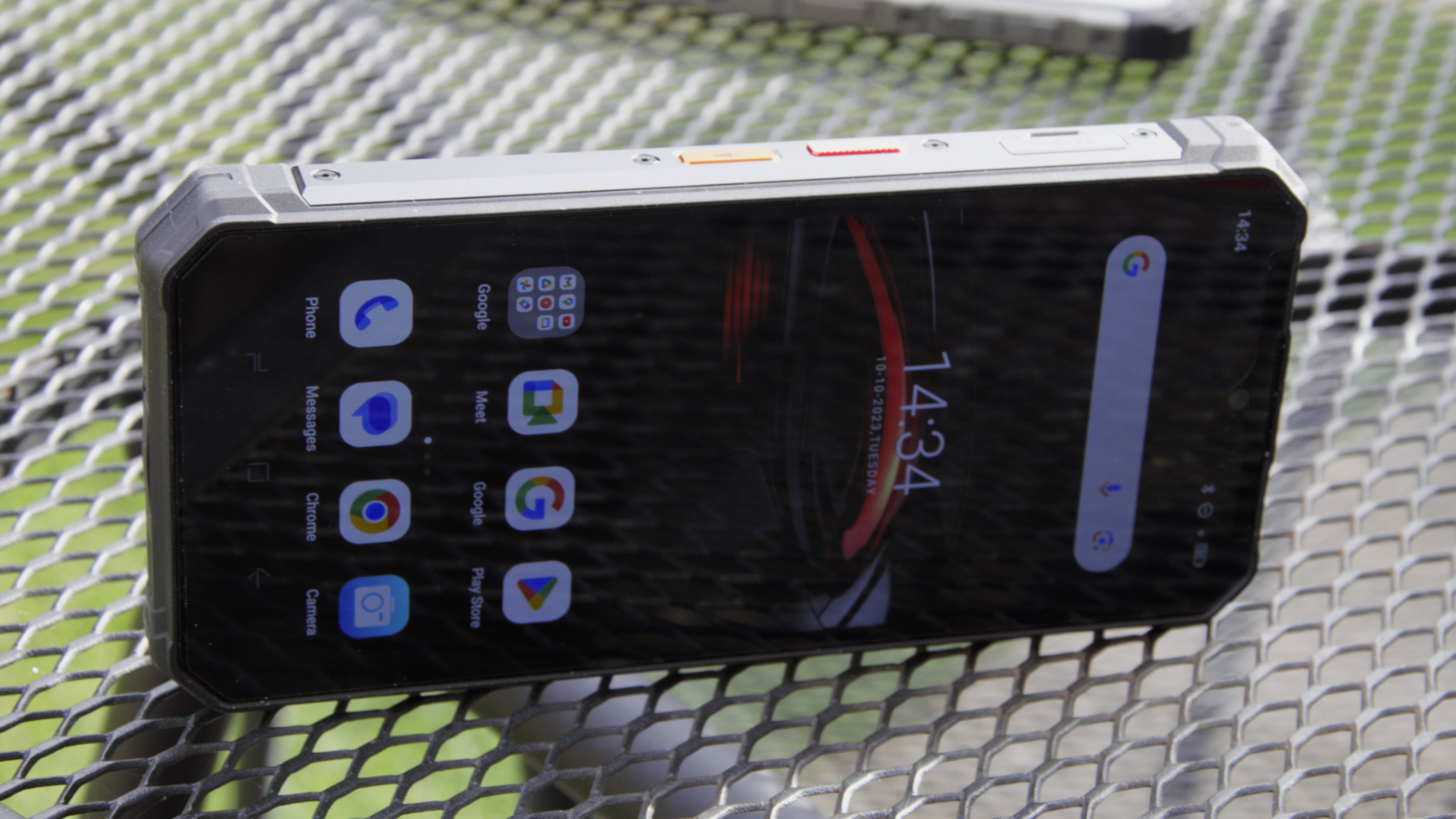
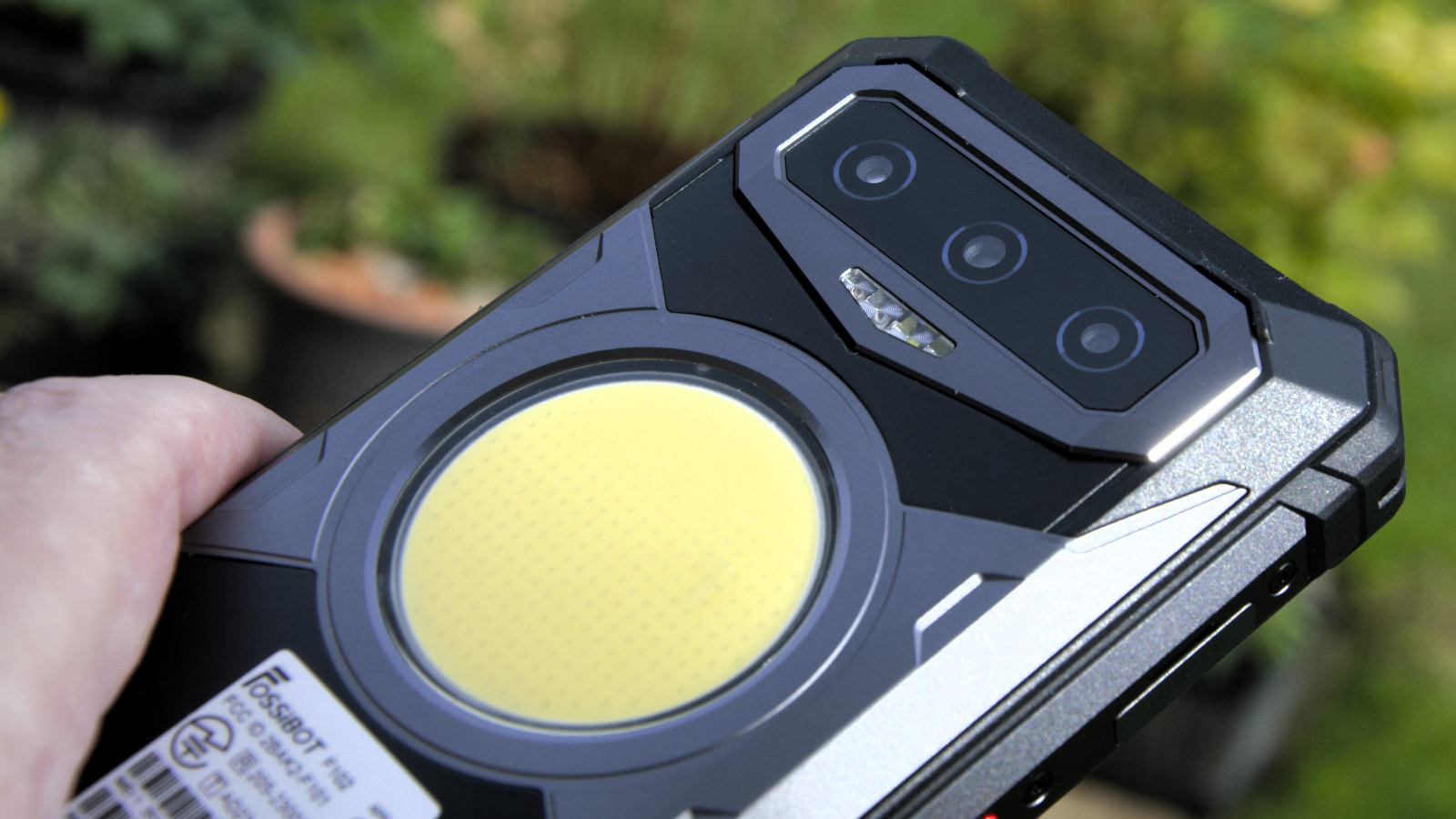
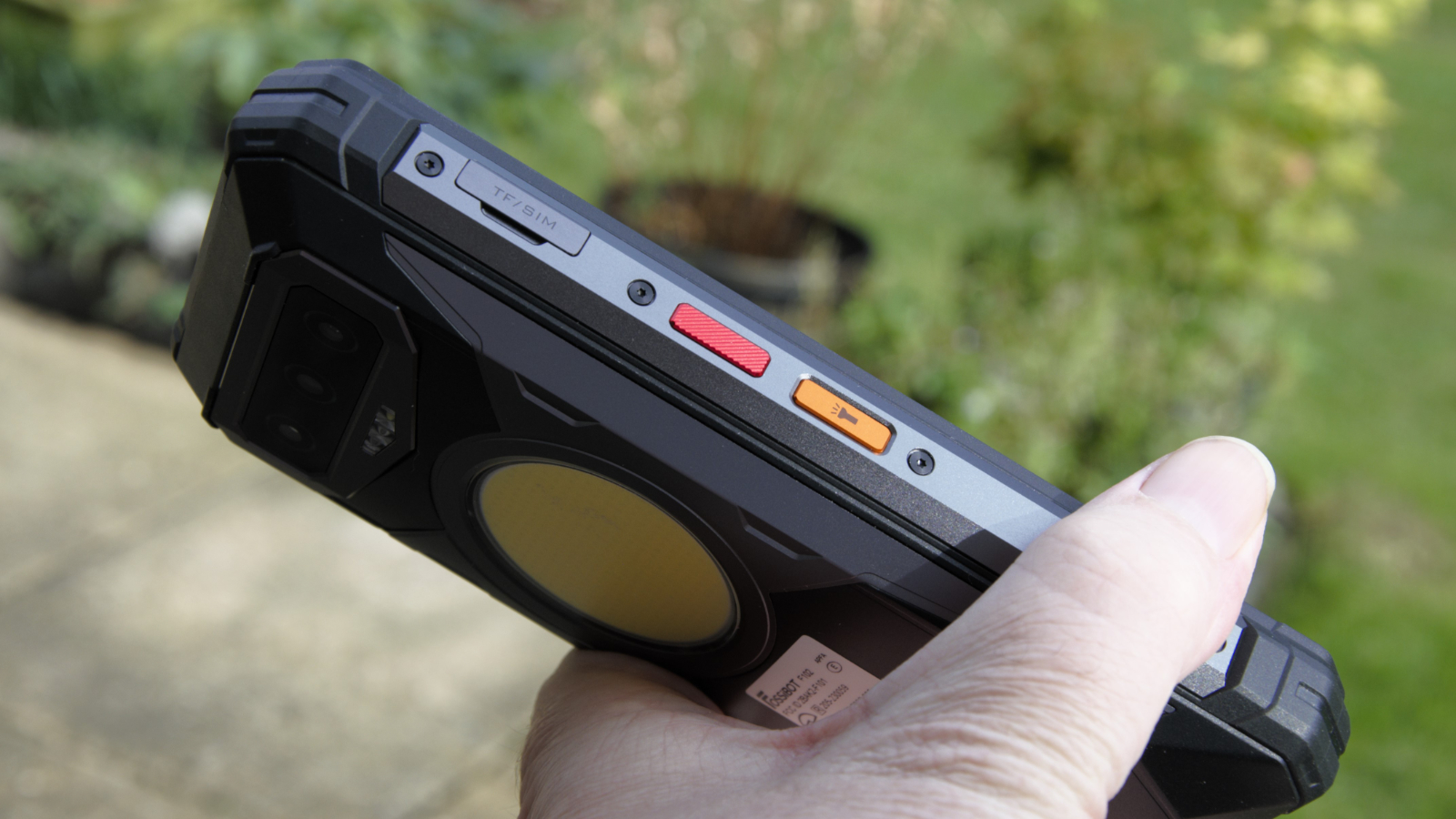
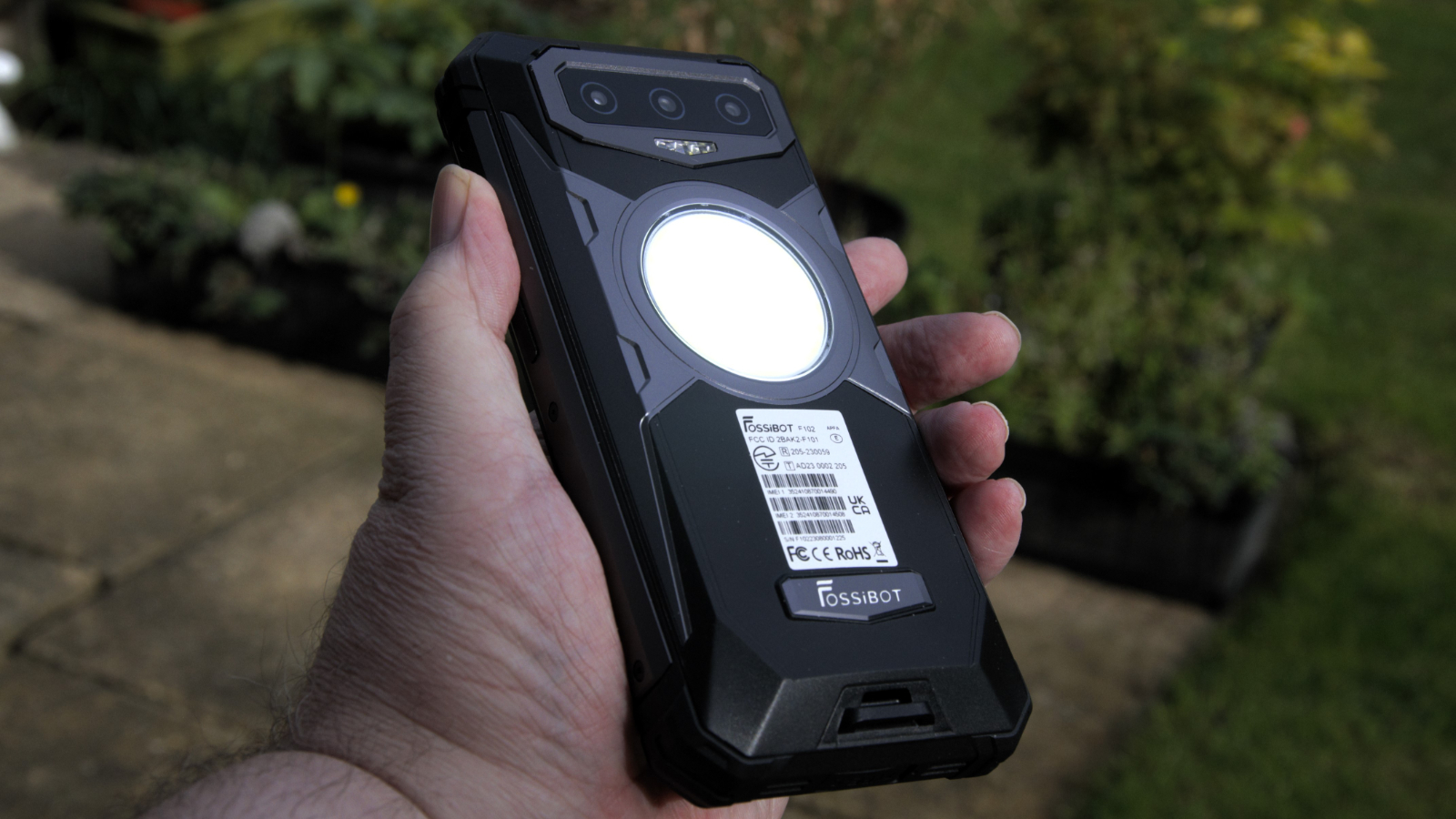
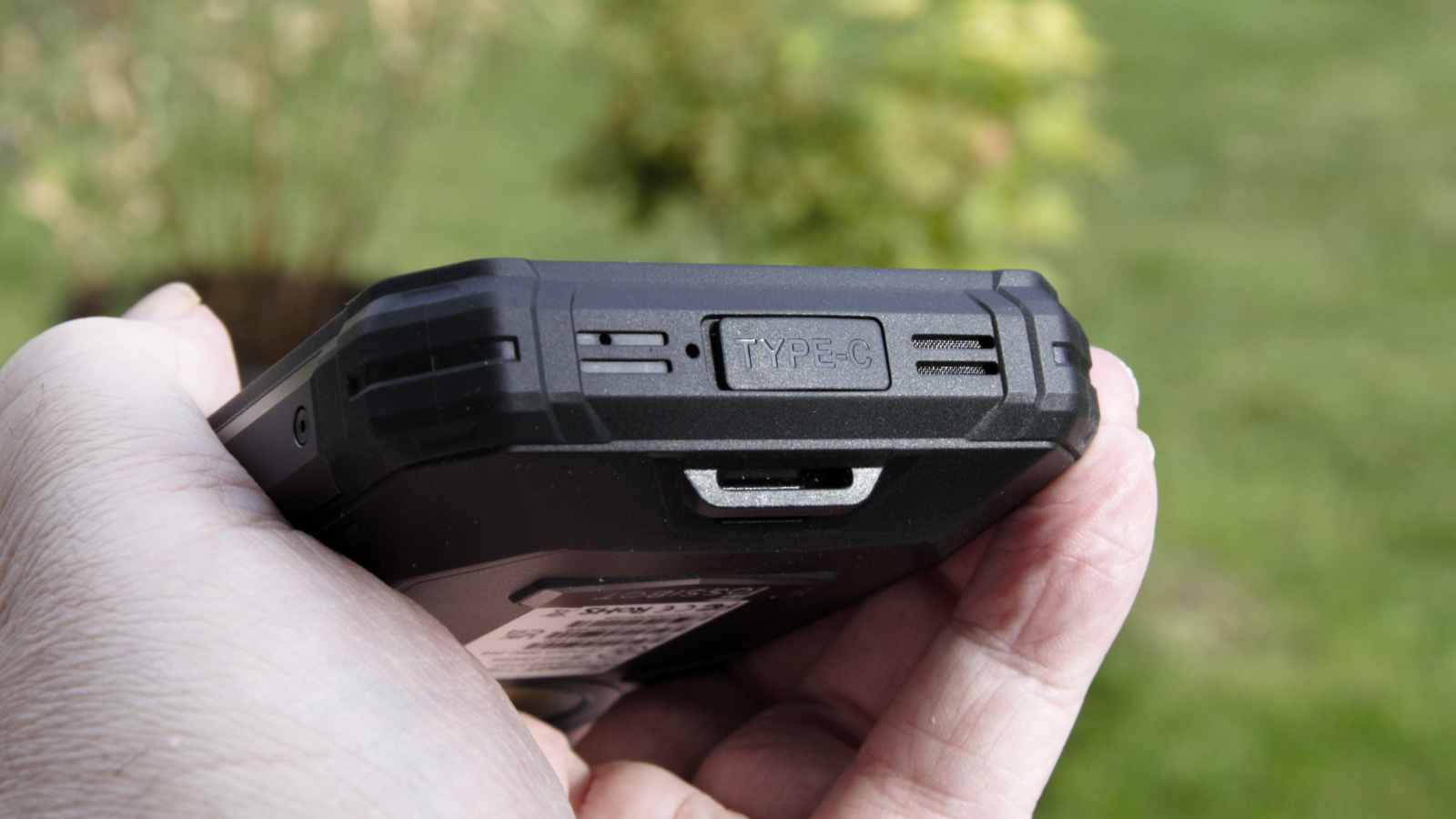
Specifications
Reasons to buy
Reasons to avoid
✅ You’re on a budget: For what you get, this is reasonably priced for a tough, durable rugged phone.
✅ Battery life is a top priority: During our tests, we found this 16,500mAh battery lasts for days.
❌ You want a lightweight phone: There's no getting around this - at nearly 500g, it’s heavy.
❌ You need 5G connectivity: Sadly, this phone is limited to 4G LTE.
The Fossibot F102 is our choice for the best cheap rugged phone. Sometimes, these durable smartphones can also be pretty expensive, which is where this Fossibot F102 rugged smartphone comes in. Its affordable price point compared to most rugged phones makes it more accessible to the public, especially those branching into the rugged smartphone realm for the first time.
But this is no slouch of a smartphone. It has a 6.58-inch FHD+ display with 120Hz refresh rate, a MediaTek Helio G99 chipset, giving it a solid performance overall, and it's paired with 12GB RAM, 256GB SSD that can be expanded with the microSD slot, and a sizeable 16,500mAh battery for extended use.
In addition to those great features, the Fossibot F102 also has an impressive 108MP Samsung primary camera, a 20MP night vision camera, all of the IP68, IP69K, MIL-STD-810G ratings, USB-C and a built-in camping light. Sadly, it lacks 5G, a hefty 500g, wireless charging, and a headphone jack, but that's no longer the end of the world.
For a budget or entry-level rugged smartphone, this thing is pretty impressive, and it runs Android 13, so you'll be up to date with all of your applications.
Read our full Fossibot F102 review.
Best rugged phone for cameras
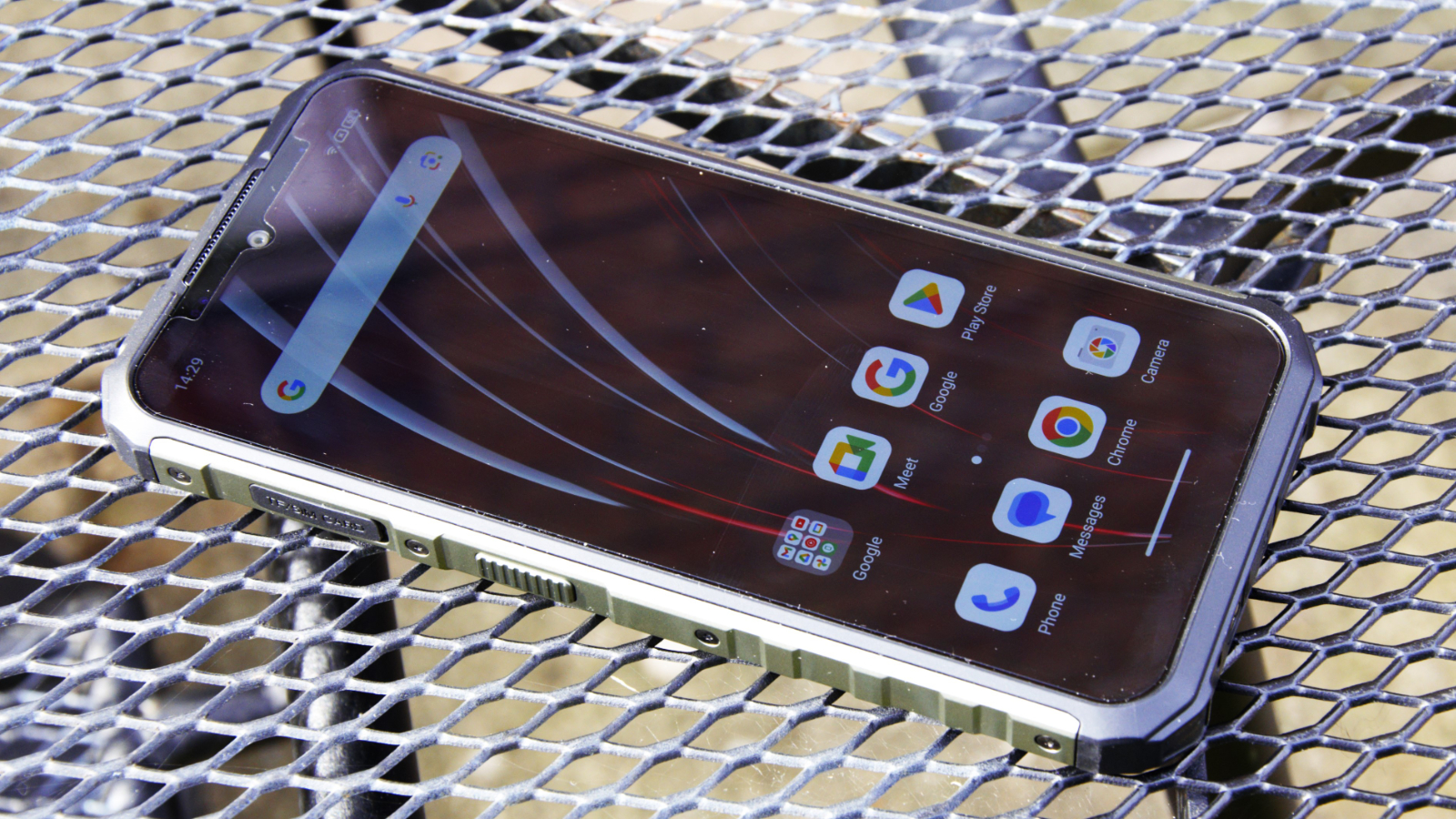
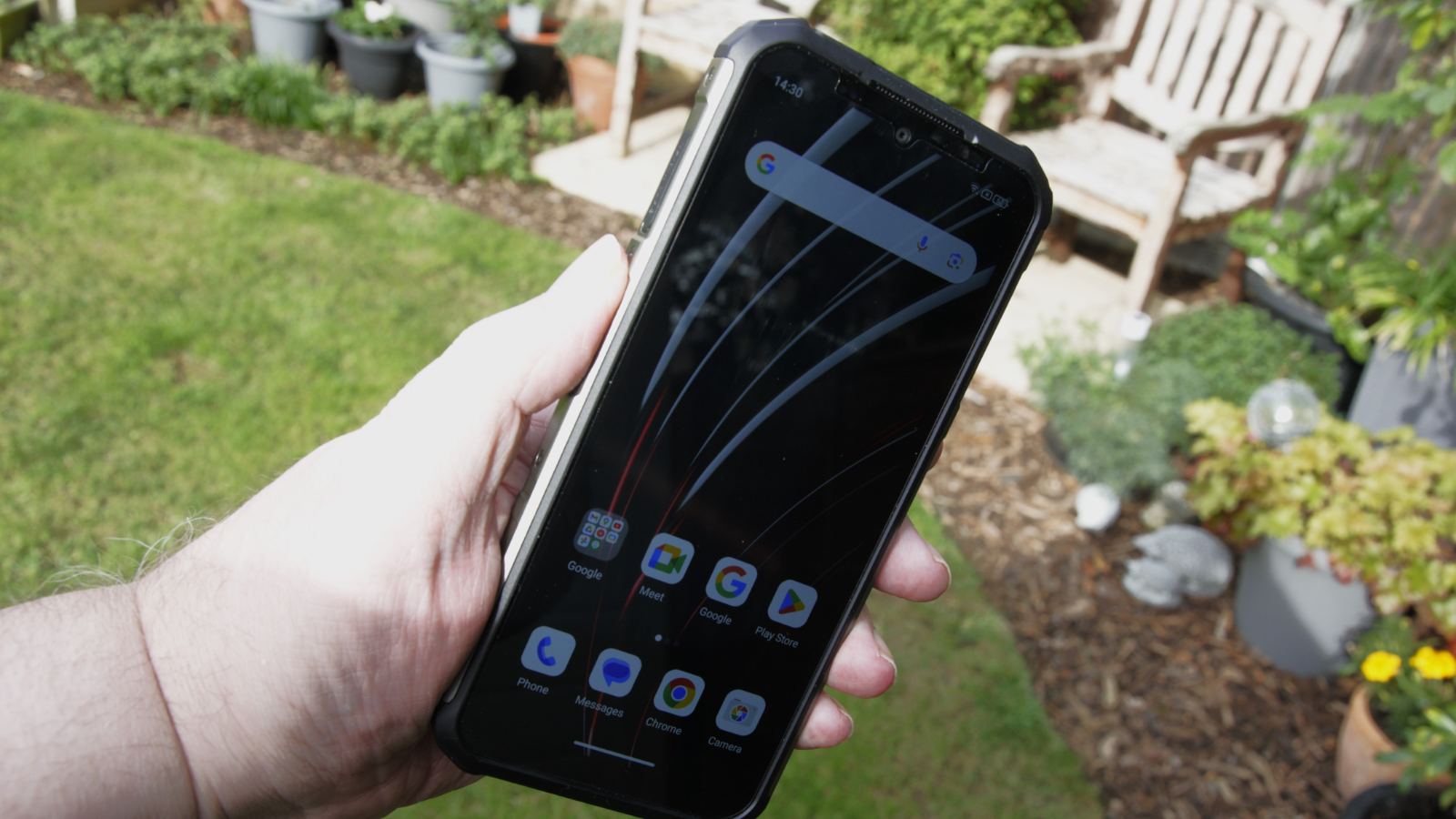
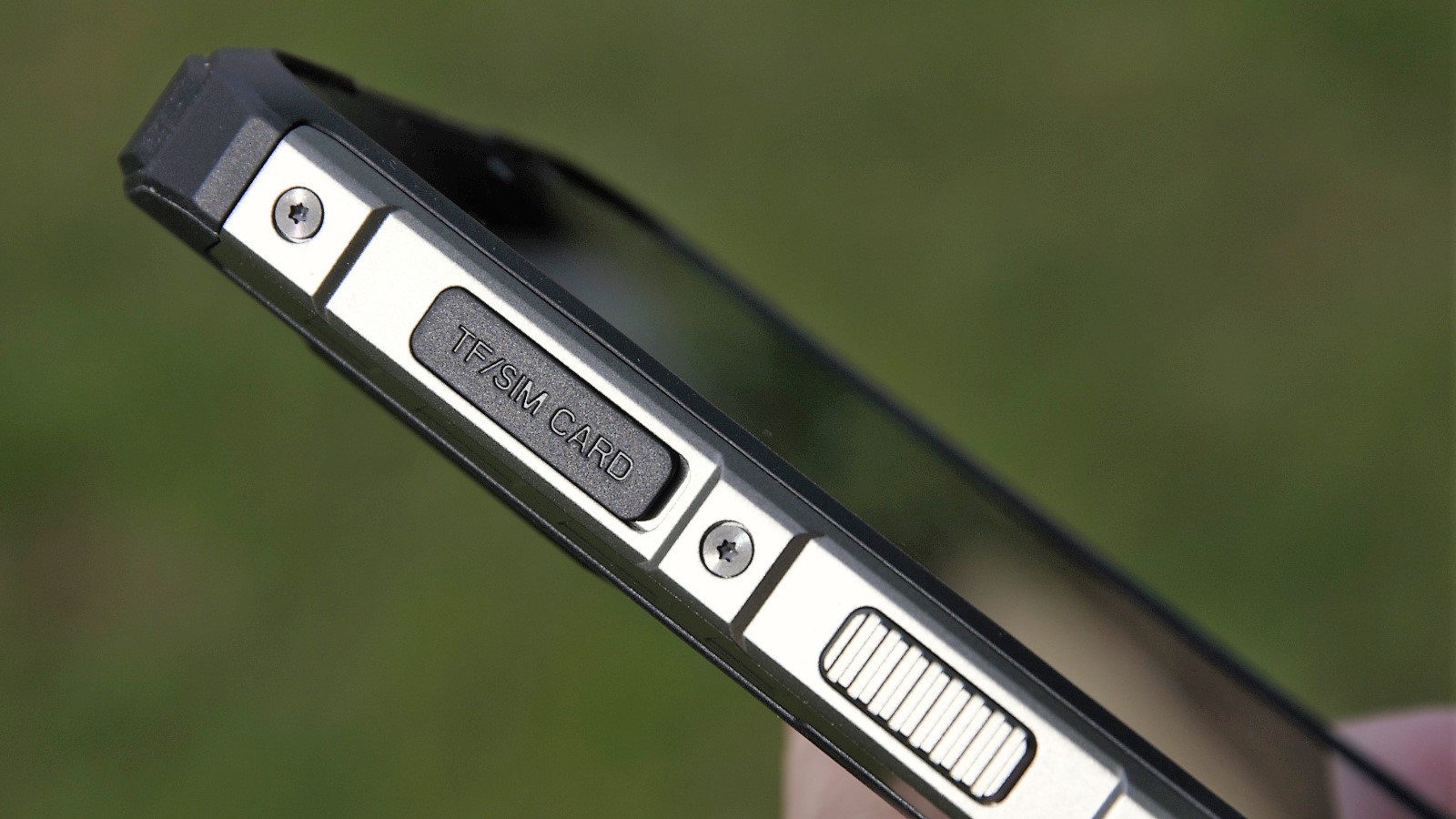
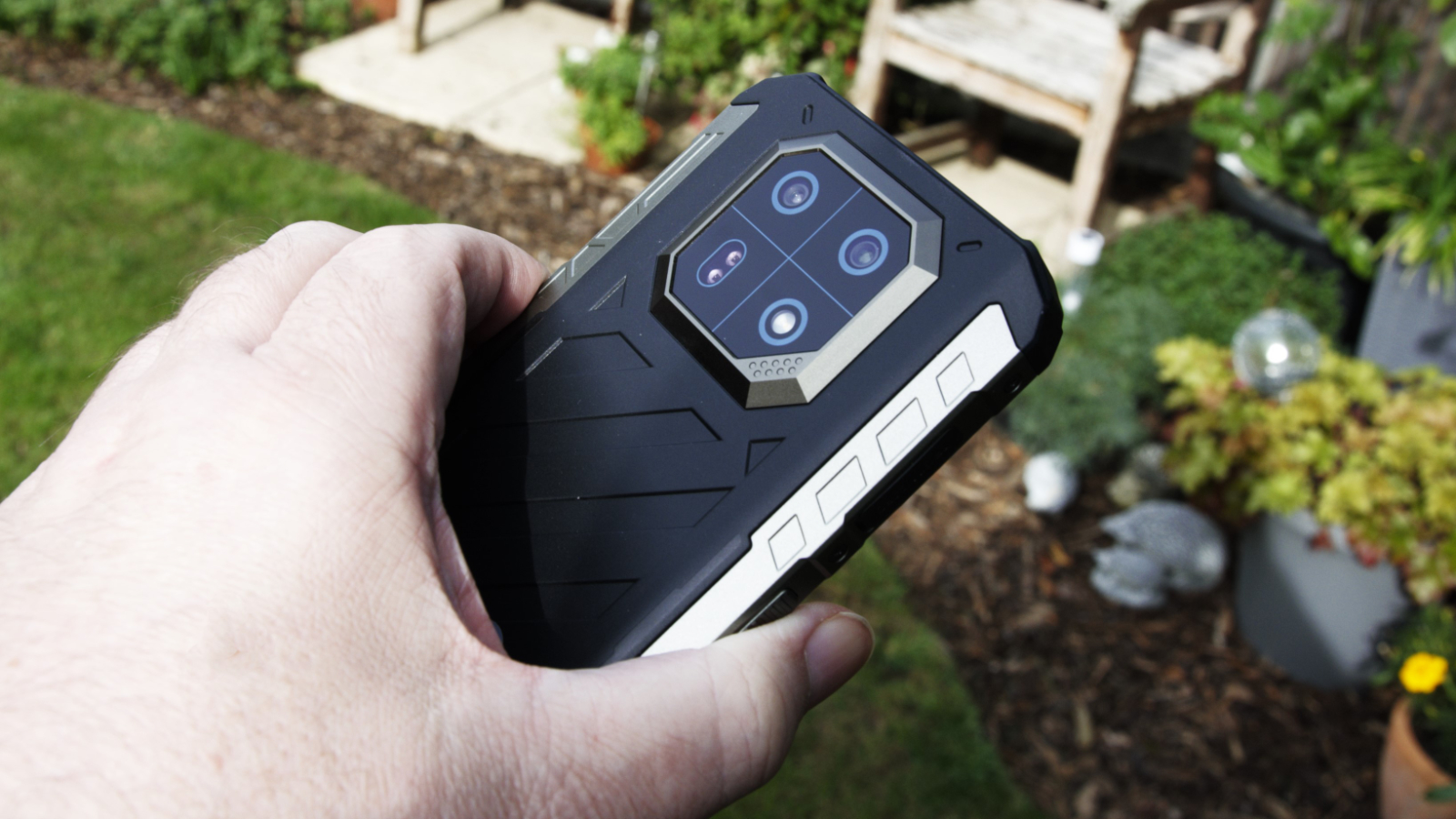
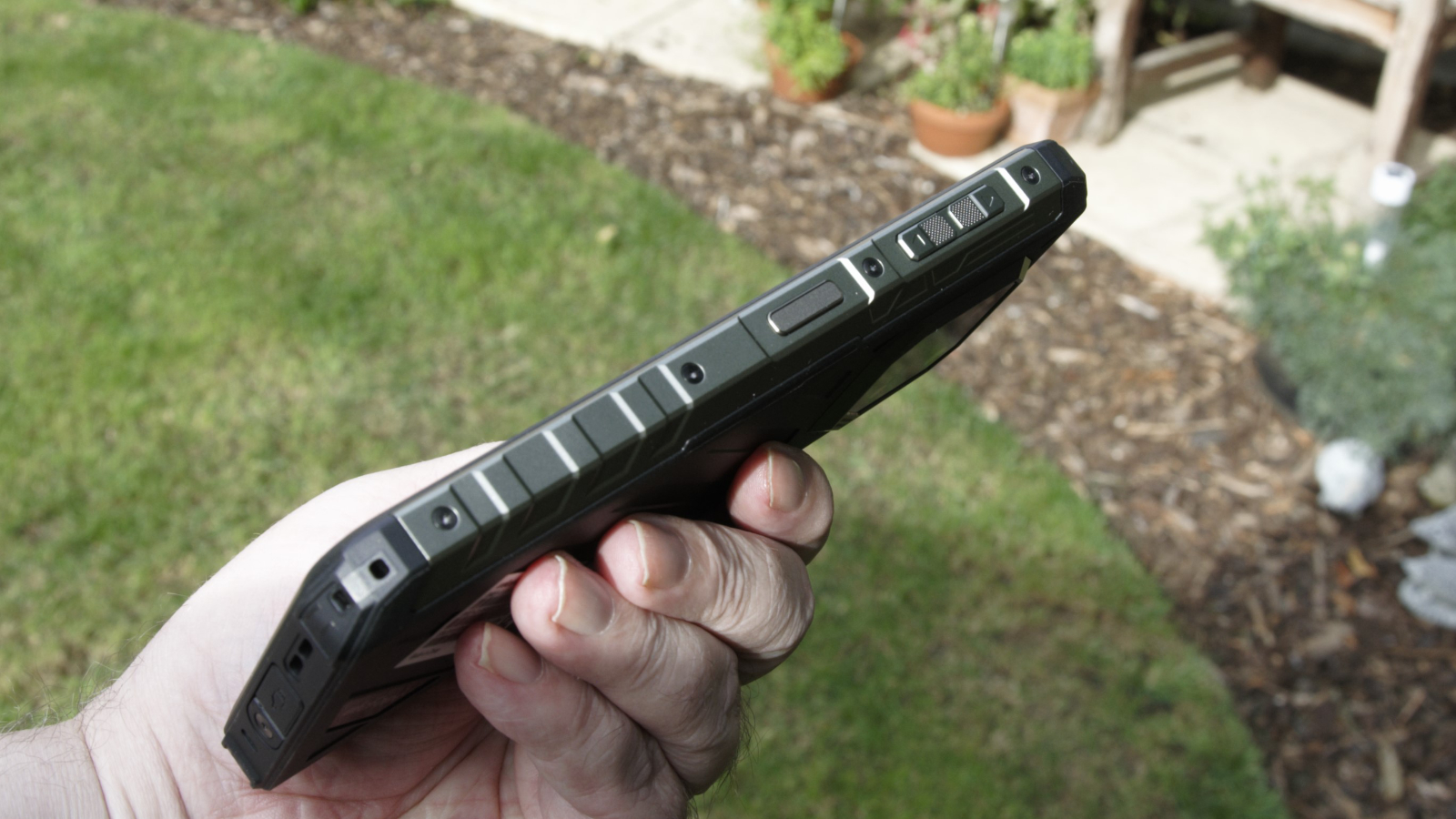
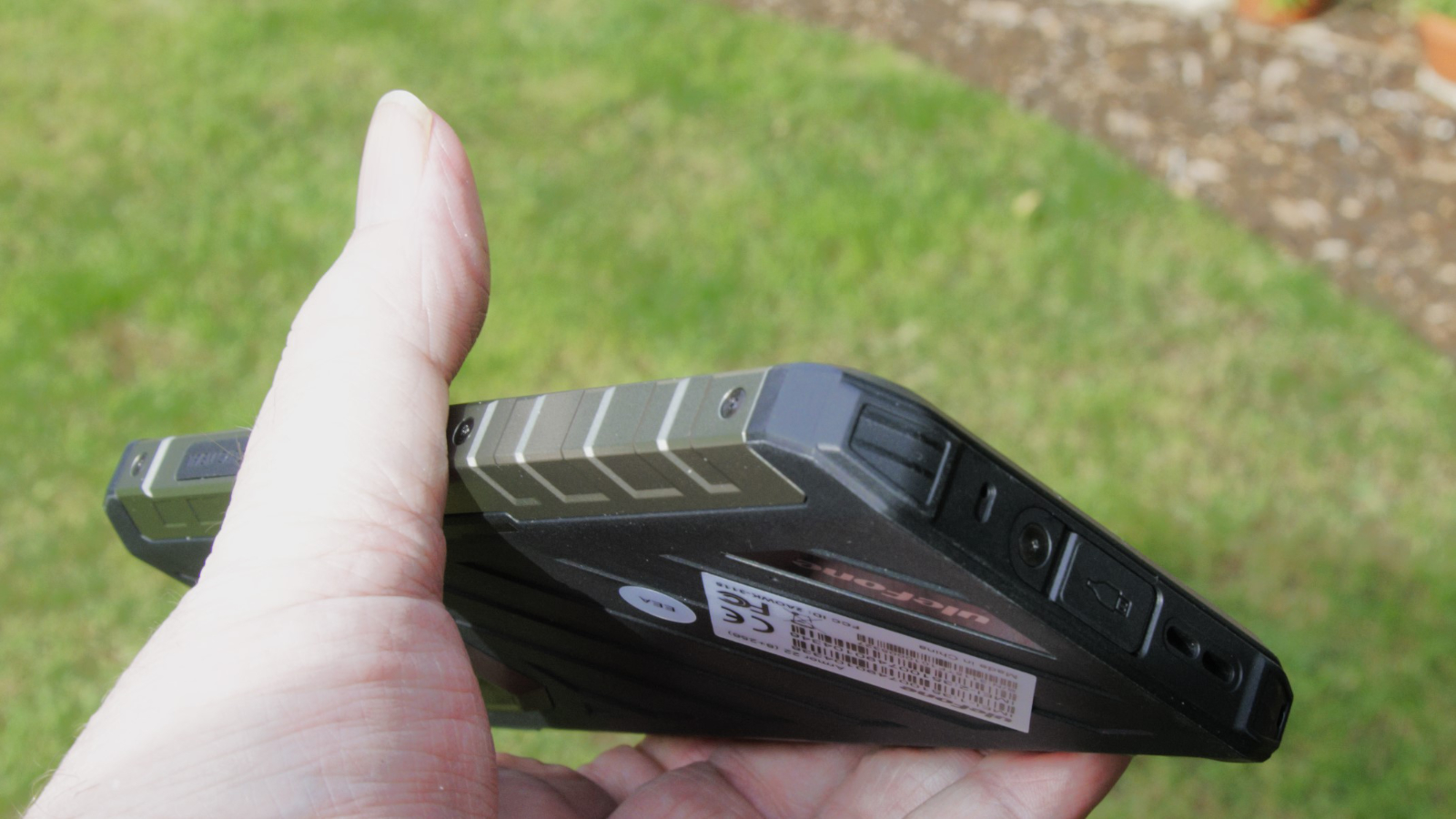
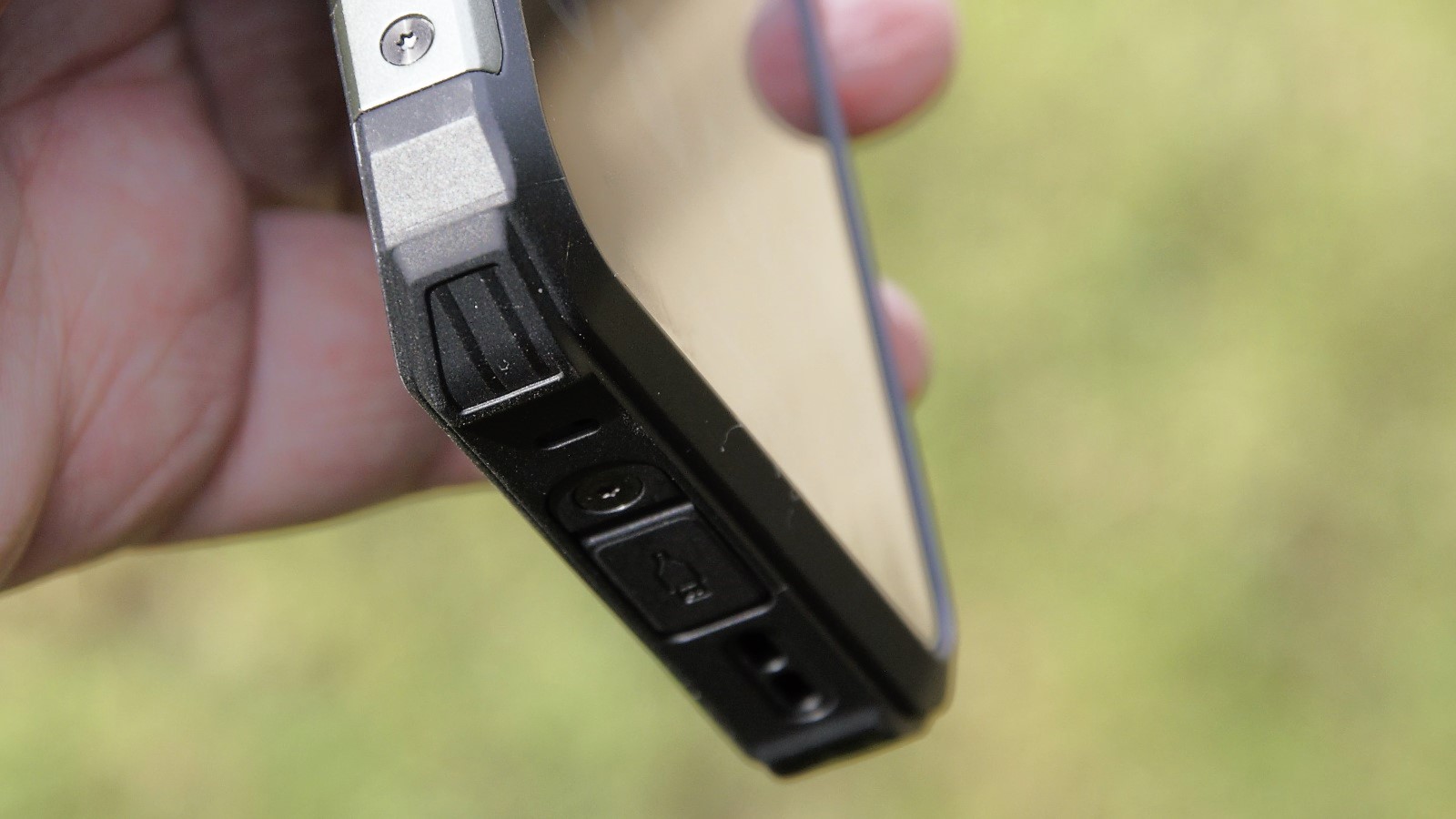
Specifications
Reasons to buy
Reasons to avoid
✅ You need good cameras: We found this rugged phone possessed an exceptional camera setup, including night vision.
✅ You want a 120Hz screen: In use, the screen refresh rate offered smoother scrolling and gaming.
❌ You need 5G: There's no 5G support here, this phone only supports 4G LTE.
❌ You prefer a thinner, lighter device: In our experience, this phone is quite chunky.
The Ulefone Armor 22 is our choice for those that need a reliable camera setup. This rugged Android comes equipped with three to the rear - the 64MP Sony primary camera helps with pro-level shots anywhere you may be. There's also a 64MP Omnivision OV64B Night vision camera for low-light conditions, while the front-facing camera is an 8MP Omnivision OV8856.
The Armor 22 has a 6.58-inch FHD+ LCD screen with a crisp 120Hz refresh rate to view your shots on the go and a dedicated camera button for taking quick snapshots.
While the cameras are solid on this phone, it sadly only has a MediaTek Helio G86 processor, 8GB RAM, and 256GB storage. However, to store all the photos you may take with it, you can expand your storage with a microSD Card.
Some other things worth mentioning are that this phone does not have wireless charging or 5G, but it does have a 3.5mm headphone jack, which is becoming a rarity on modern smartphones.
Read our full Ulefone Armor 22 review.
Best rugged phone for everyday carry
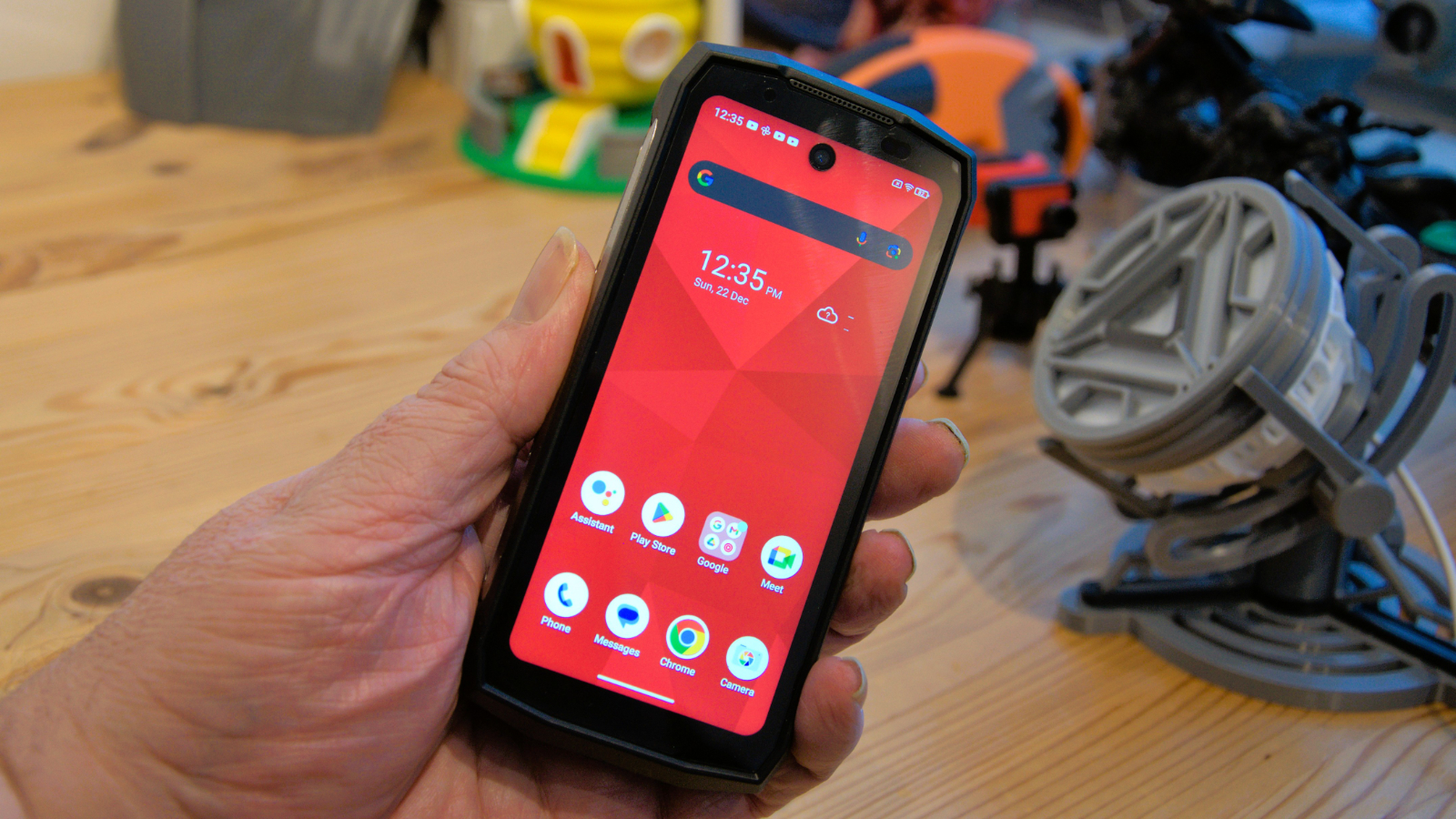
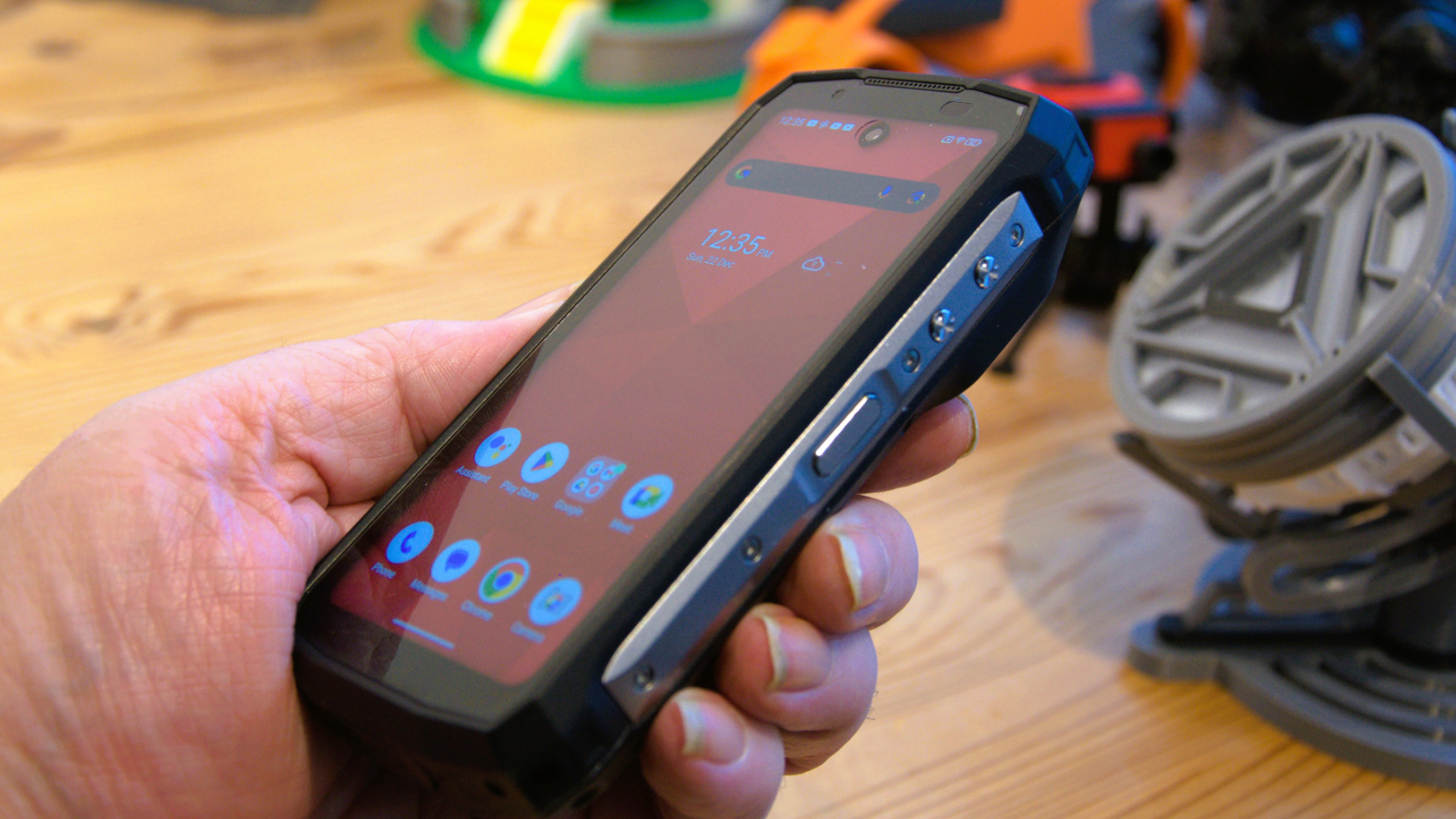
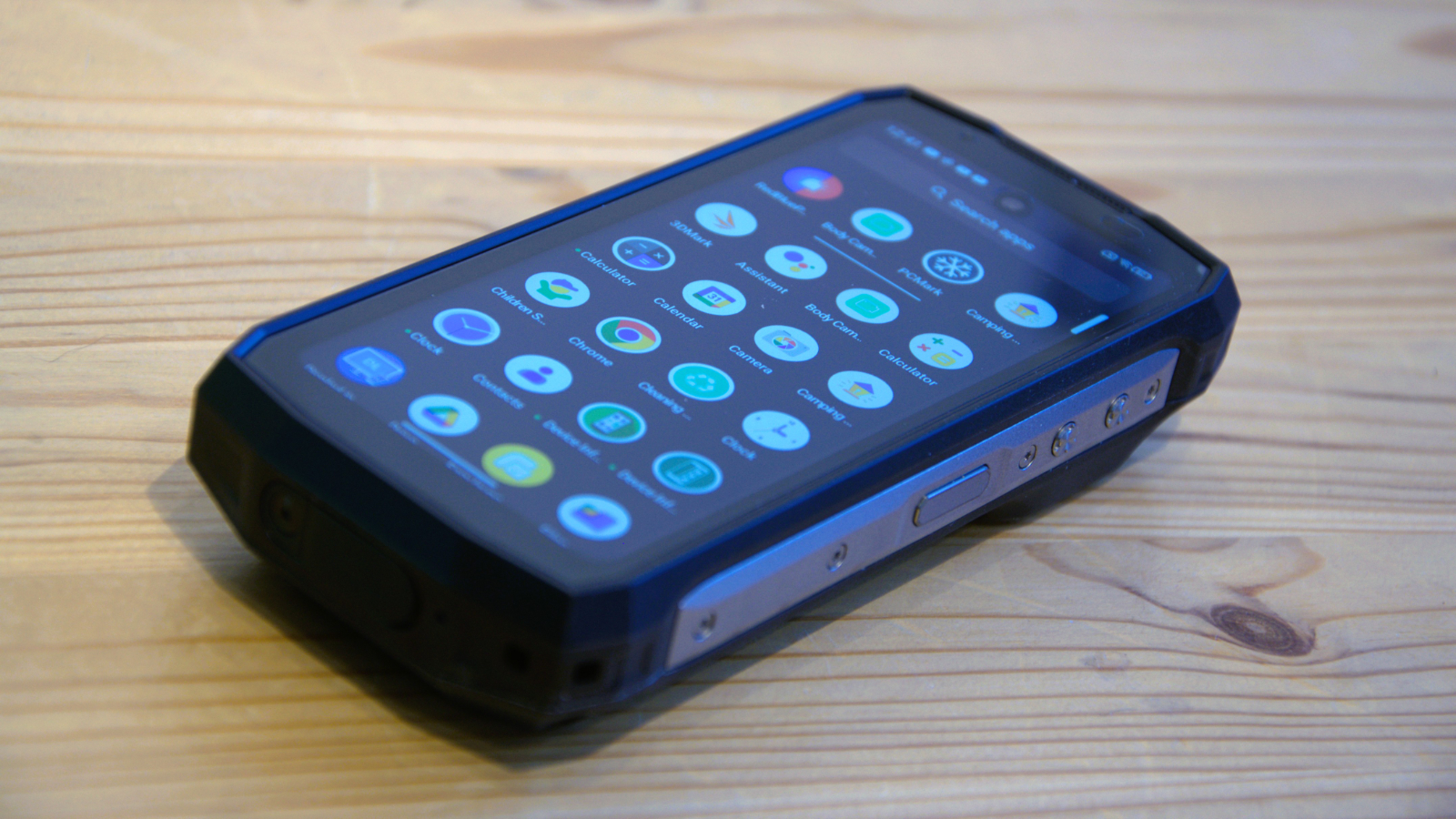

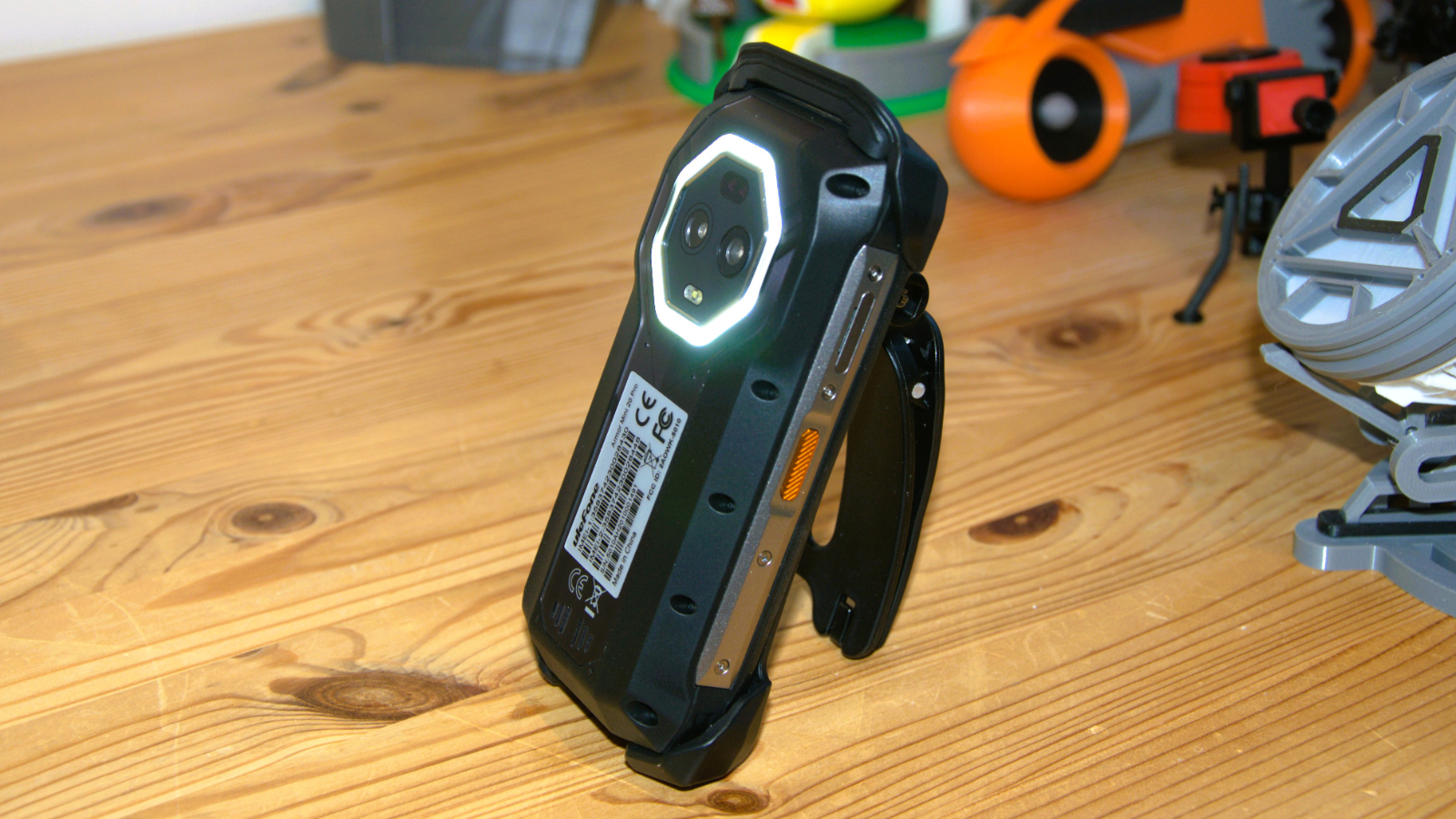

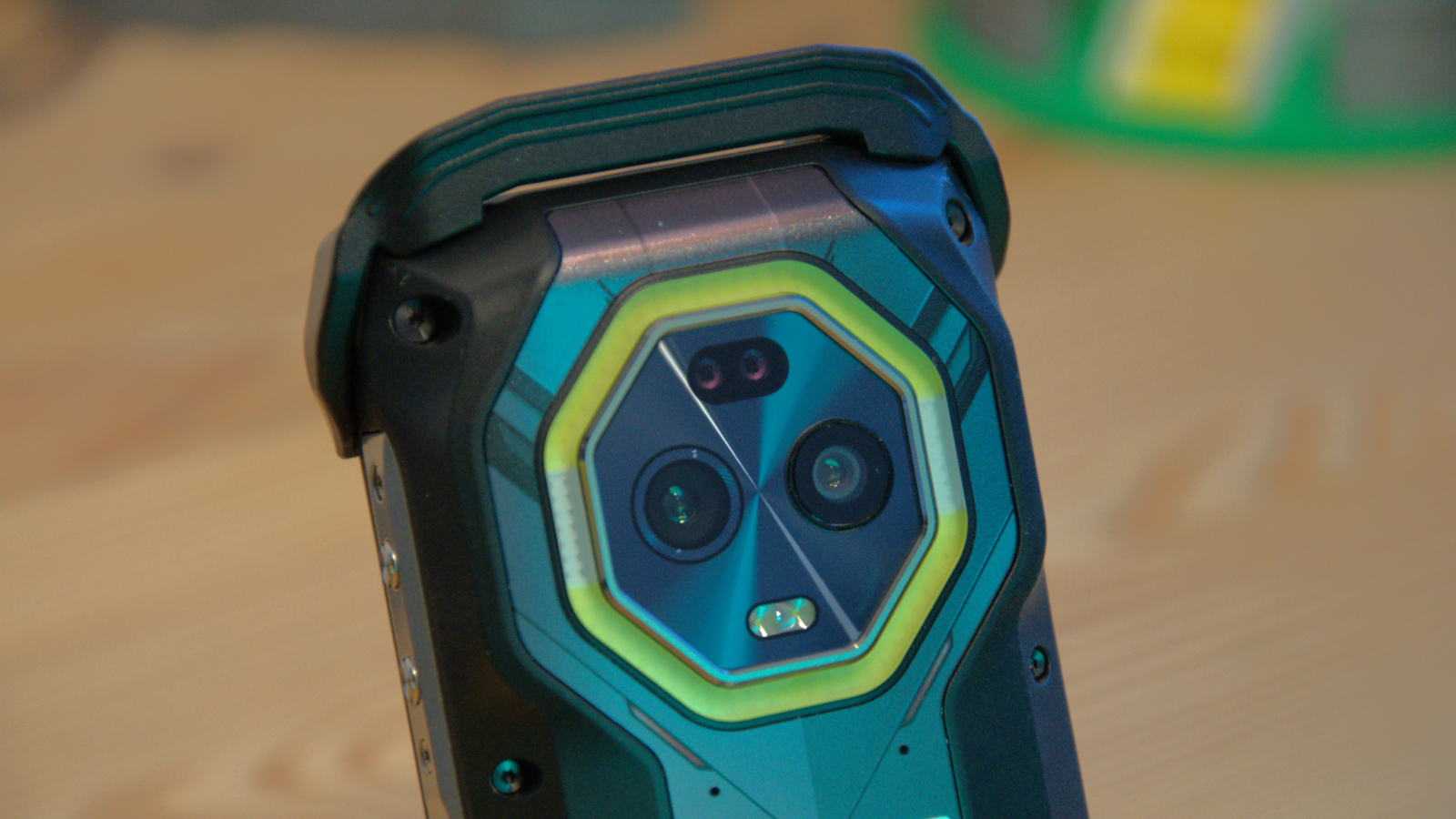
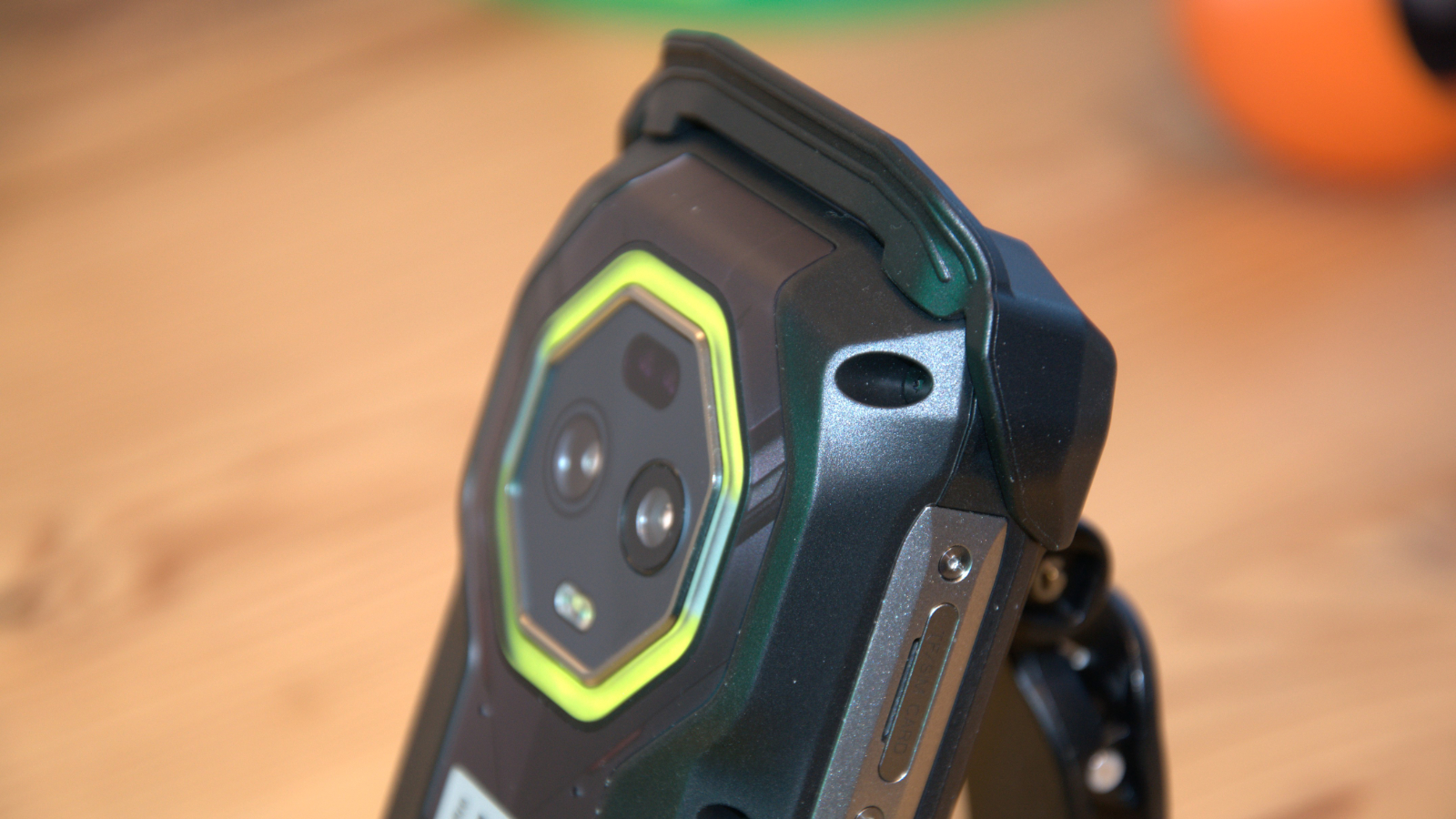
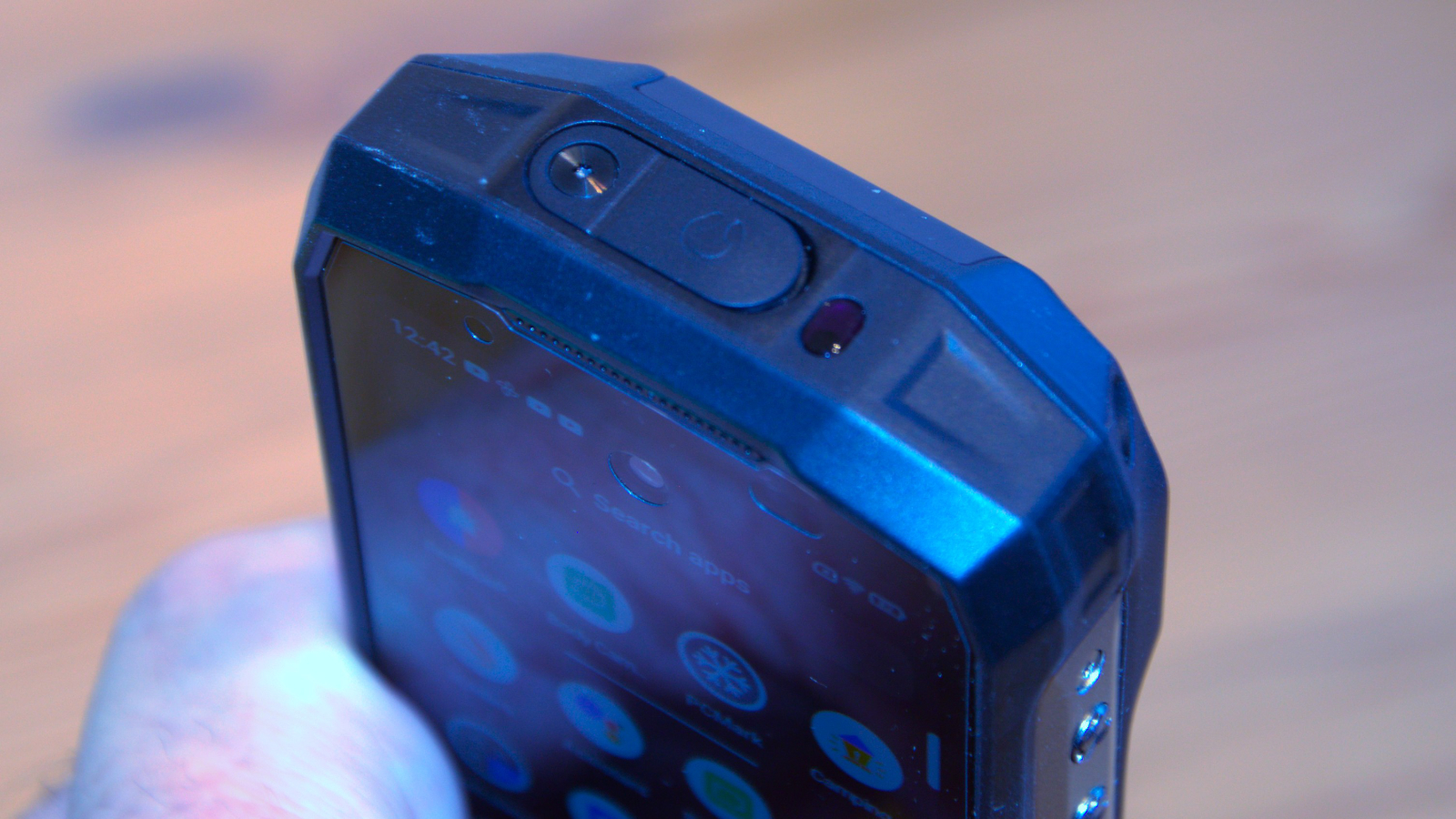
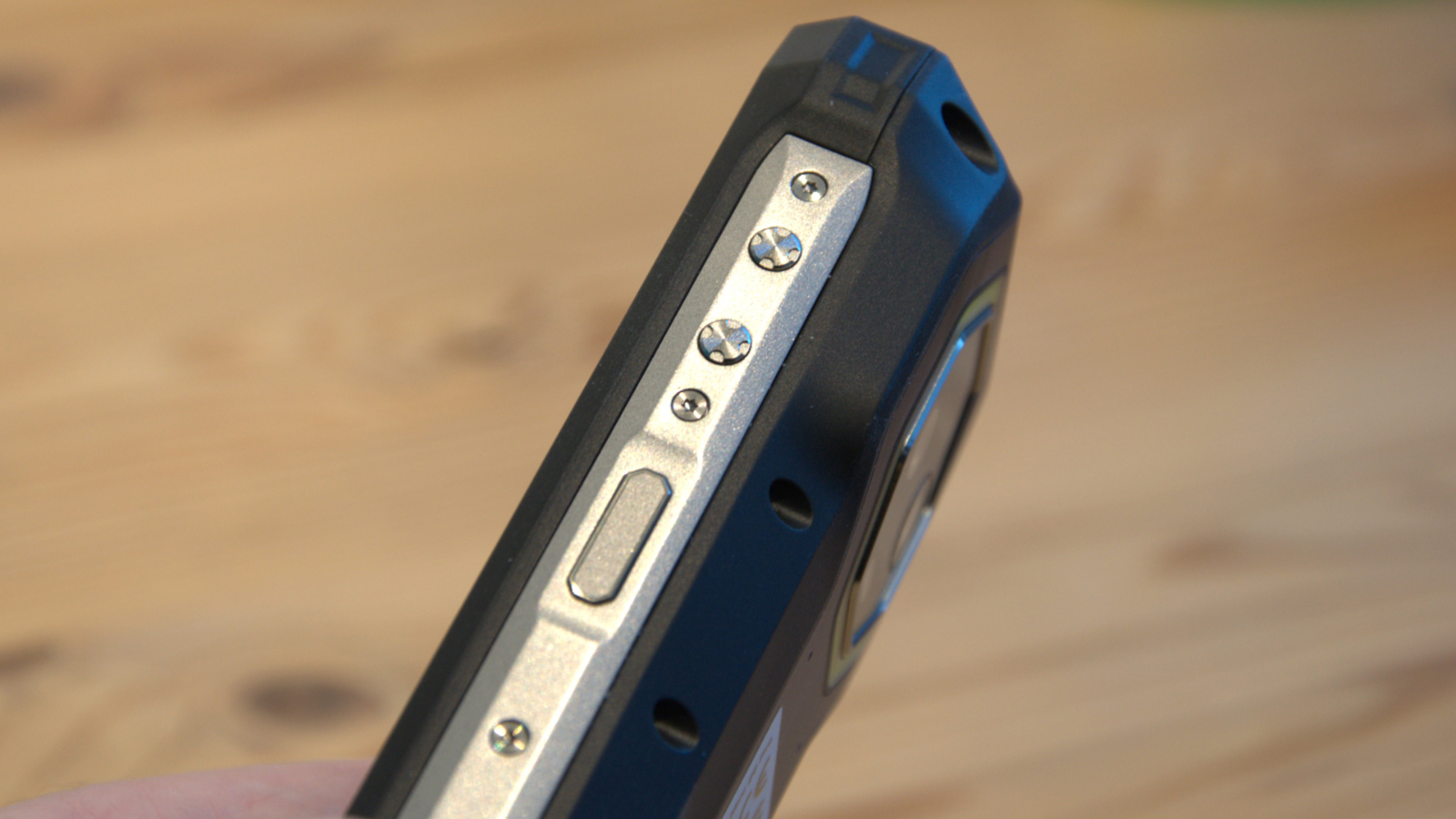
Specifications
Reasons to buy
Reasons to avoid
✅ You want an ultra-compact rugged phone that’s easy to carry with MIL-STD-810H durability and IP69K water resistance
✅ Battery life is a priority—this has a 6,200mAh battery for extended use.
❌ You want 5G connectivity—this phone is limited to 4G LTE.
❌ A slim and modern design is important—this has a chunky, old-school look.
The Ulefone Armor Mini 20 Pro is our pick for an everyday carry (EDC) rugged phone.
It features the smallest screen in our guide, measuring just 4.6 inches. Despite its compact size, this phone is lightweight yet highly durable, boasting IP68, IP69K, and MIL-STD-810H certifications. Additionally, it includes rugged side grips for better handling and enhanced durability in the event of a drop. It also houses a 50MP rear camera and a 3.5mm headphone jack- something we rarely see these days.
Regarding performance, the Ulefone Armor Mini 20 Pro is no slouch either. This little phone has 8GB RAM, 256GB storage, a MediaTek Dimensity 6300 chipset, Runs Android 14, and has a 6,200mAh battery for all-day use. However, it lacks 5G and doesn't fast charge or wireless charge, but if that's not a deal breaker, this is a great option.
In short, it's an ultra-compact, ultra-tough, go-anywhere, do-anything rugged smartphone ideal for business professionals.
Read our full Ulefone Armor Mini 20 Pro review.
Best rugged phone for everyday carry alternative
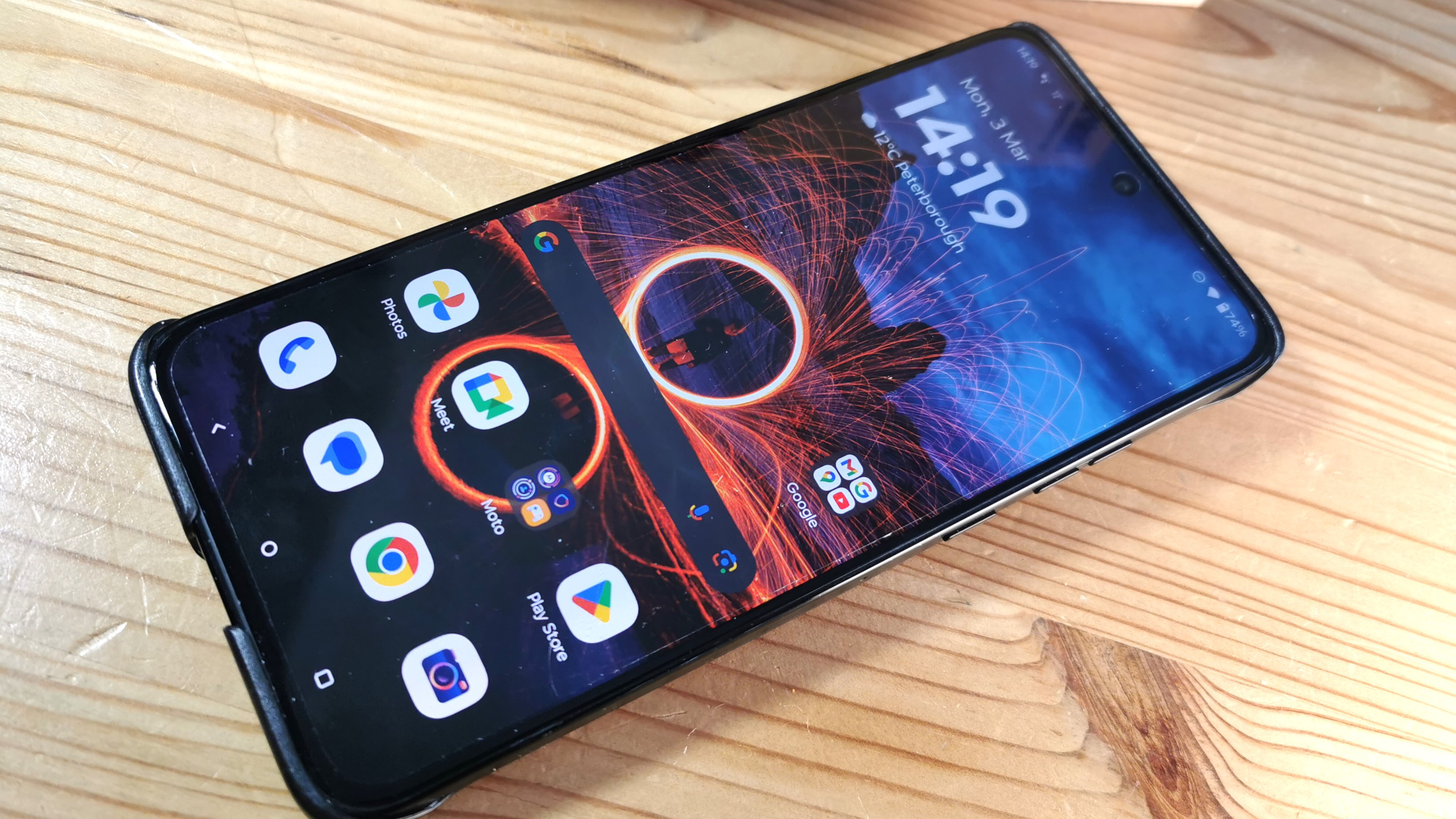
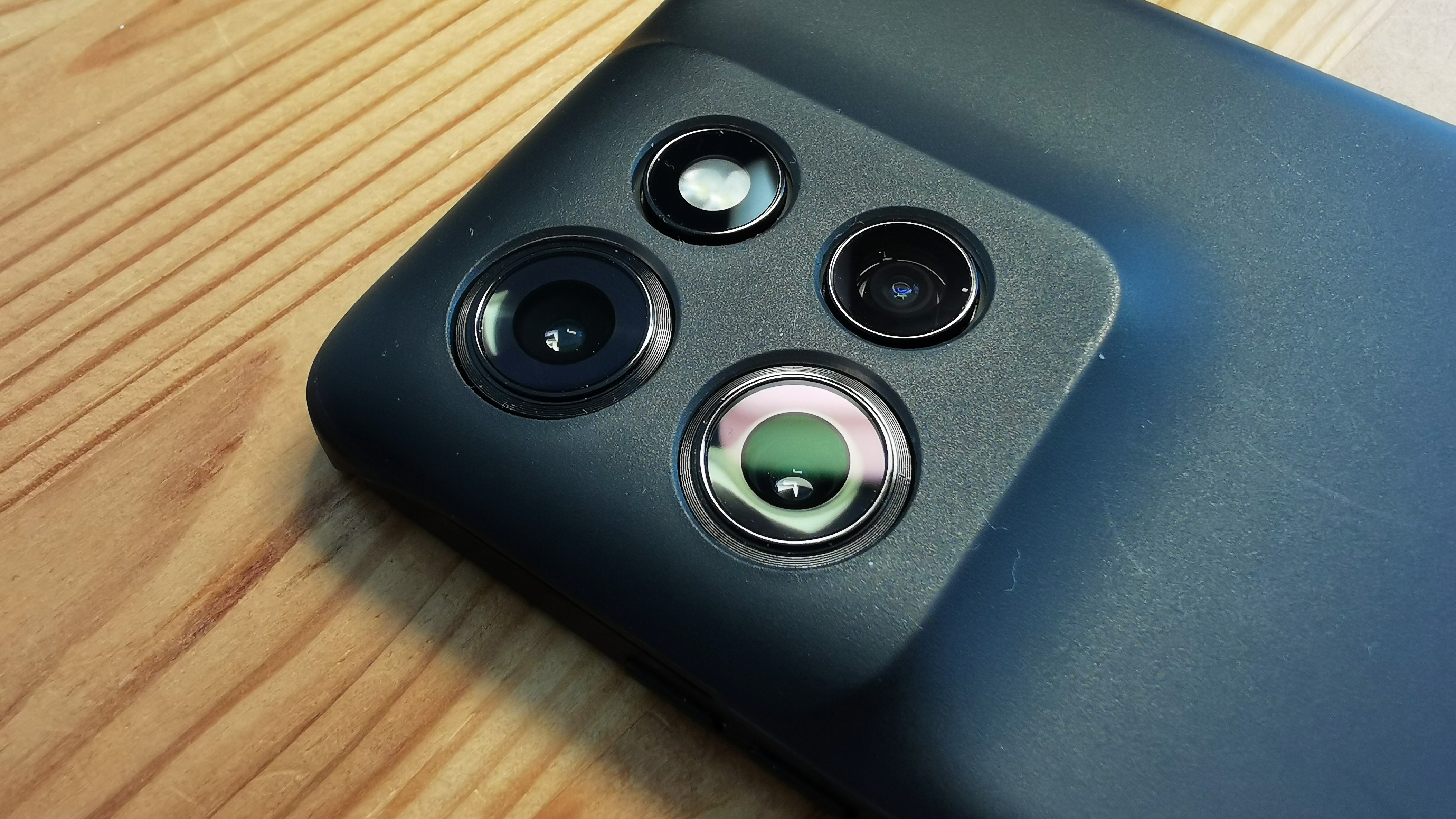
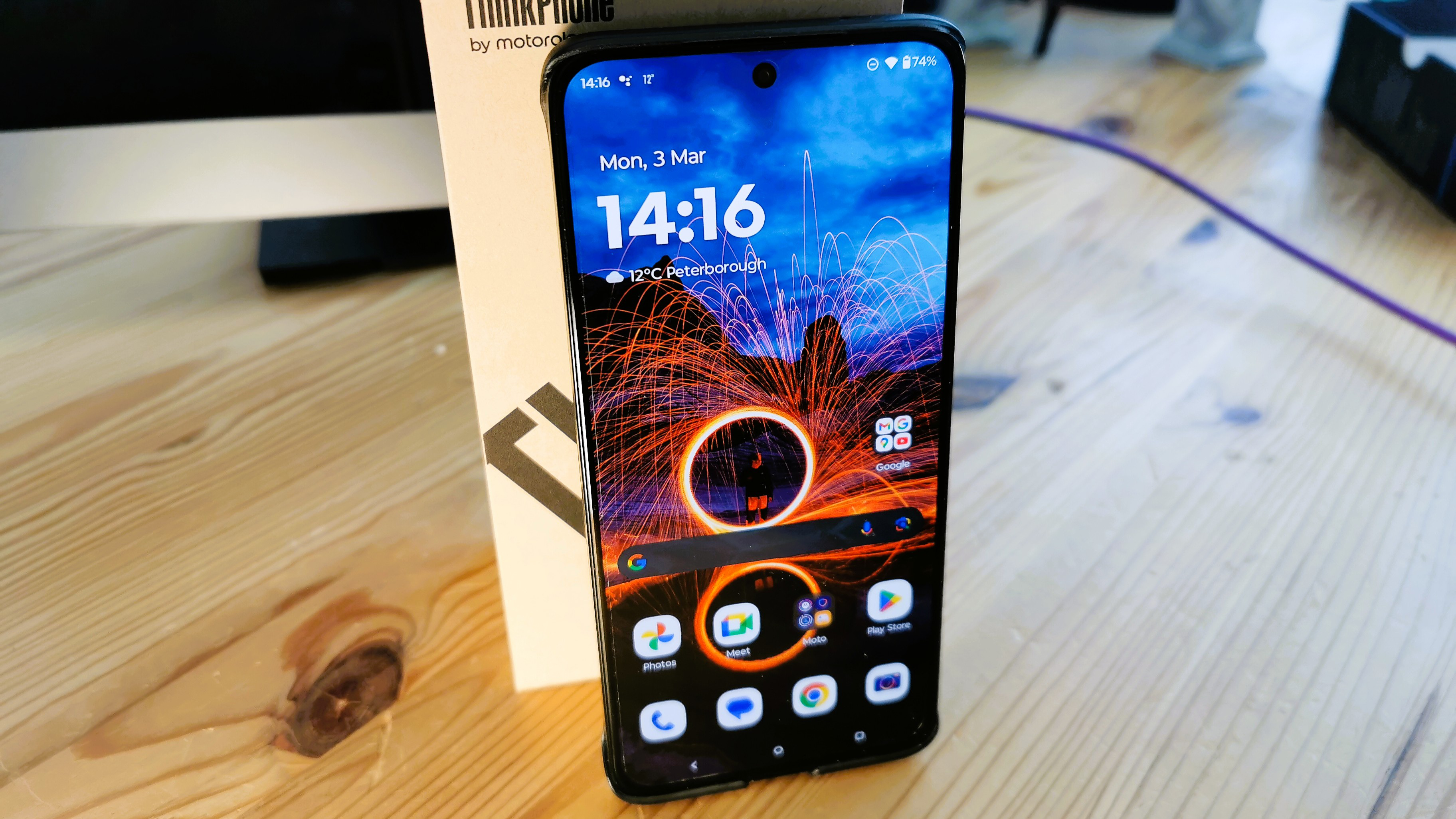
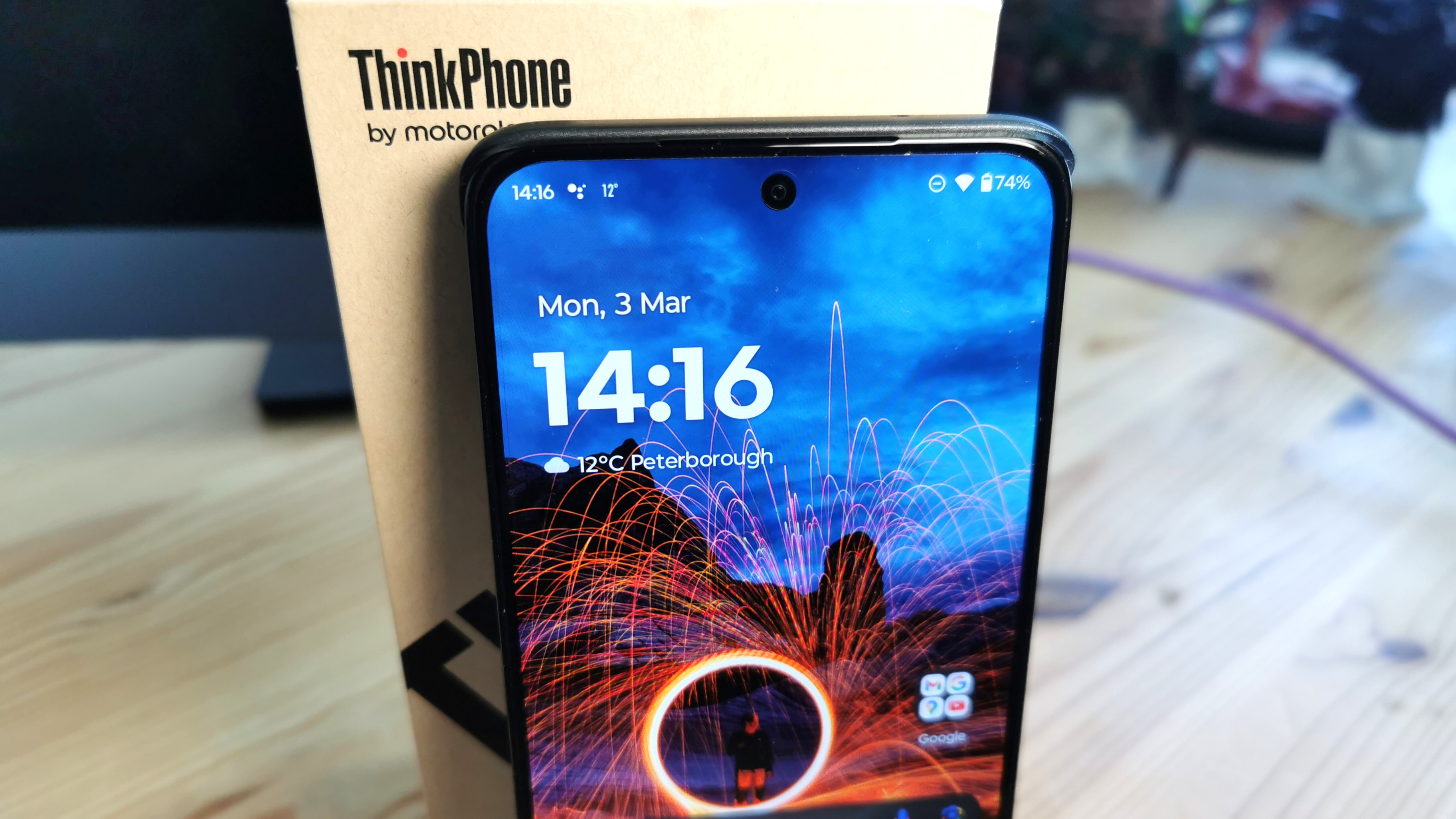
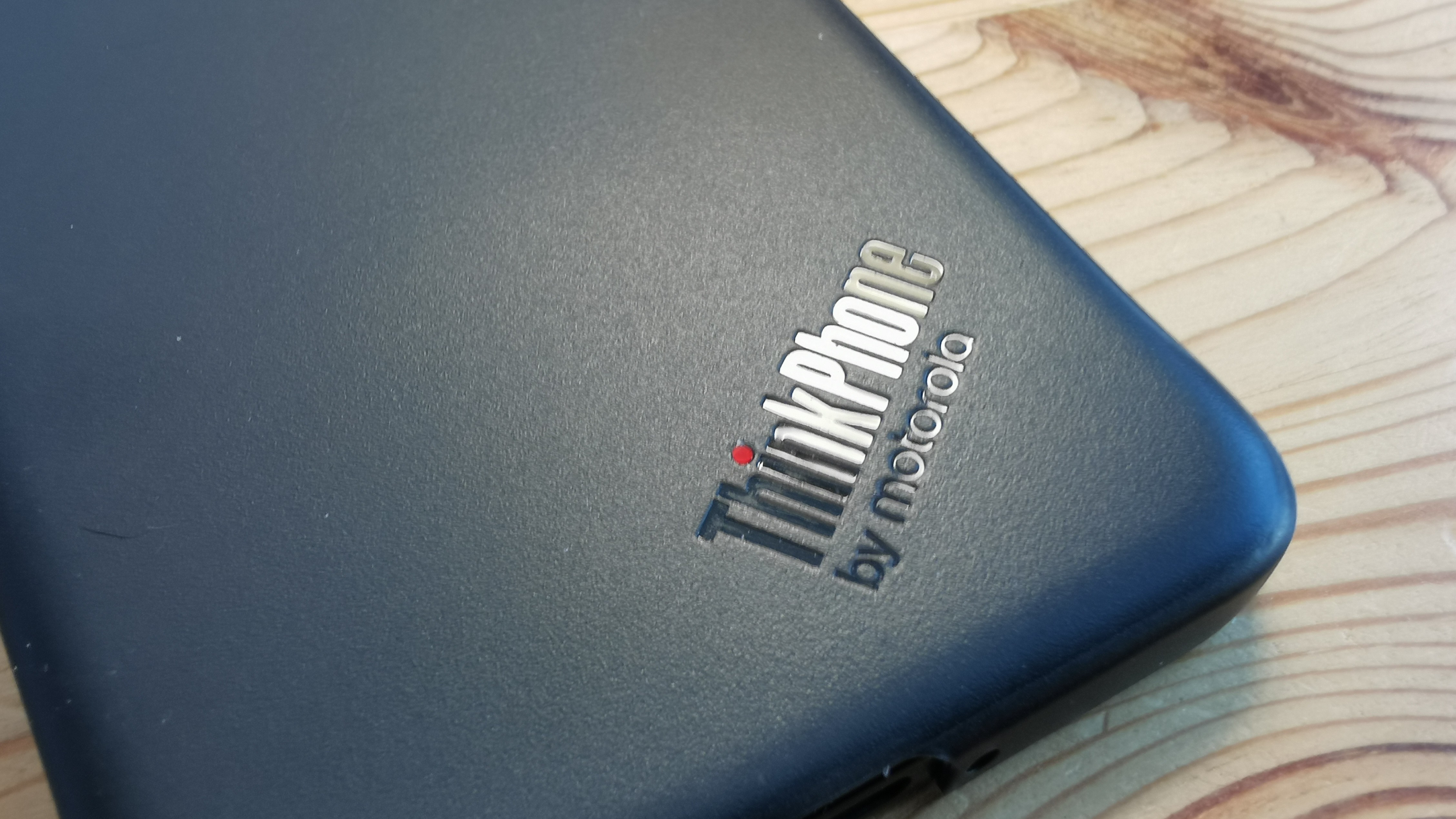
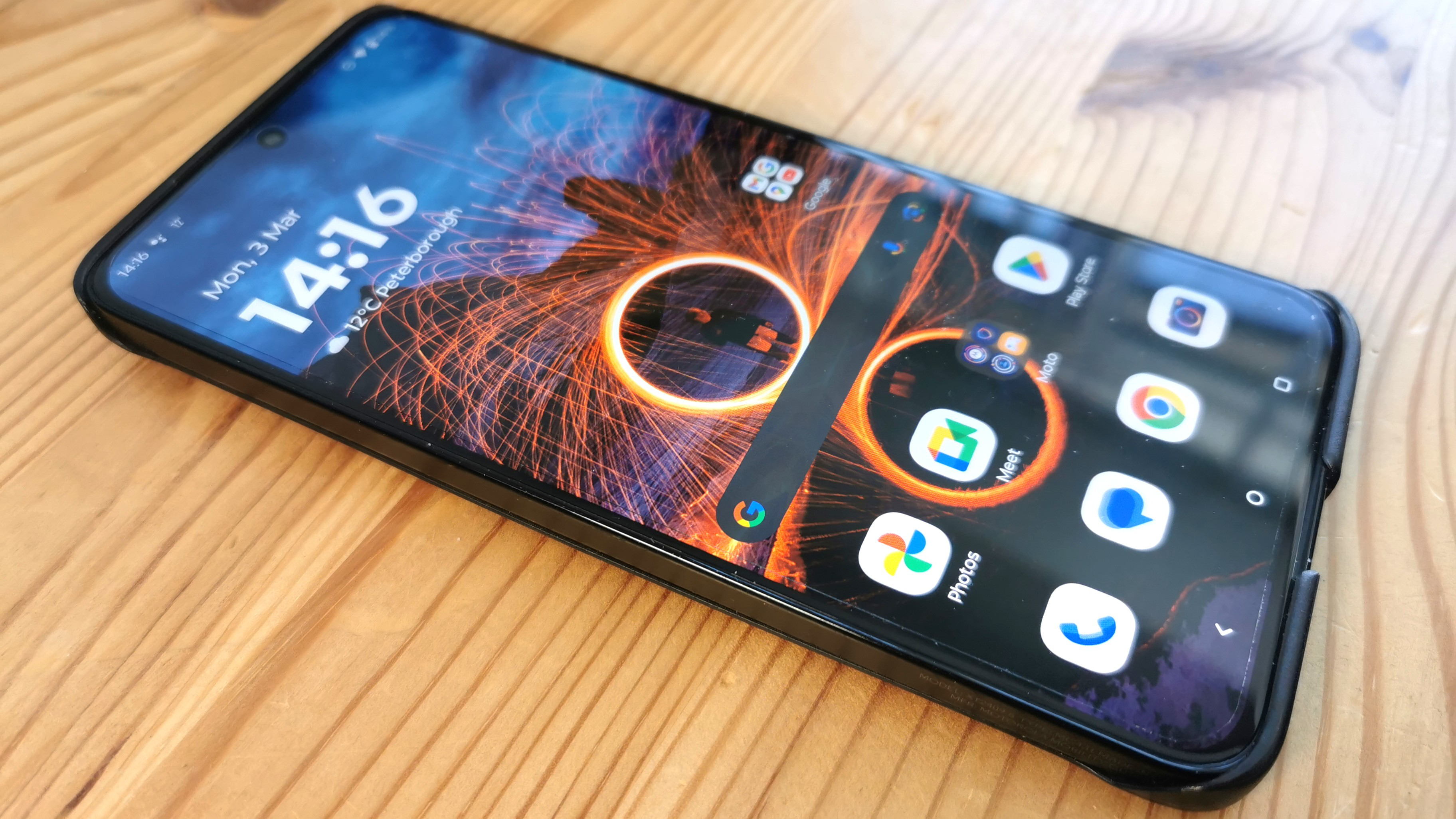
Specifications
Reasons to buy
Reasons to avoid
✅ You need a rugged phone that looks professional: Looking like a traditional smartphone, this durable device is well-suited to business use.
✅ You want a bright display: The p-OLED screen here is great, and we especially like the brightness here, which is ideal for use in direct sunlight.
❌ You need a cheap rugged phone: Budget-wise, this retails for around the price of a mid-range phone, so it's not the cheapest we've tested.
❌ You're in the US: At present, the ThinkPhone 25 is unavailable in the US, and we recommend checking out our Ulefone Armor Mini 20 Pro review for an EDC rugged phone that's more widely available.
If you want a rugged phone that looks and feels more like a traditional smartphone, then the ThinkPhone 25 by Motorola should be on your list. Our only caveat here is that it's not widely available in the US, so for an alternative, check out the similarly styled Ulefone Armor Mini 20 Pro review, which is also very suitable for everyday carry.
The ThinkPhone 25 is one of the most practical rugged smartphones we've ever had the pleasure of reviewing. It has MIL-STD-810H and IP68 ratings, yet only 8.1mm at its thickest point, making it a very elegant and professional pick for everyday carry (EDC). You'll find four cameras in total - to the rear, there's a 50MP Sony LYTIA 700C, 13MP Ultrawide angle, and 10MP Telephoto, while the front sports a 32MP camera. The display is excellent, and it even supports wireless charging.
Price-wise, it's not the cheapest rugged phone around. But then, Motorola hasn't skimped on features here - although we would've liked to see a MicroSD card port. Compared to the previous model, it's admittedly a step back in terms of power, but then, we felt the original SoC was somewhat overpowered for an everyday rugged phone, and overall, the trade-off feels fair. In almost every other way, the ThinkPhone 25 is the better phone.
Read our full ThinkPhone 25 by Motorola review.
Best rugged phone for battery life
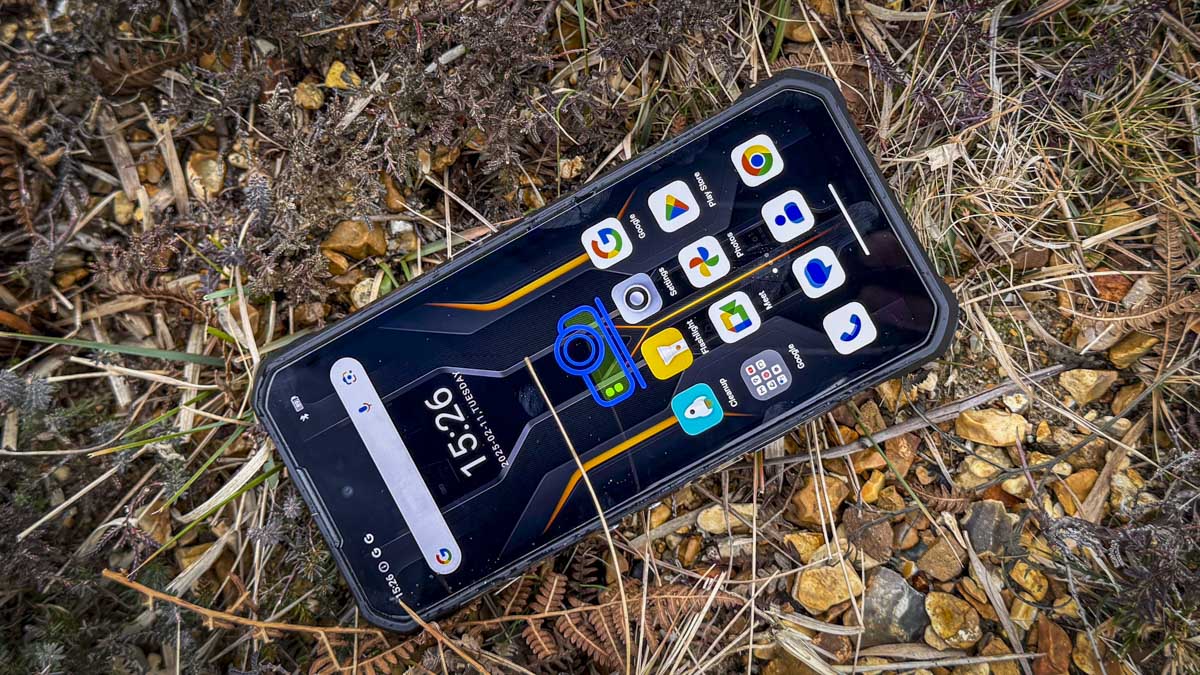
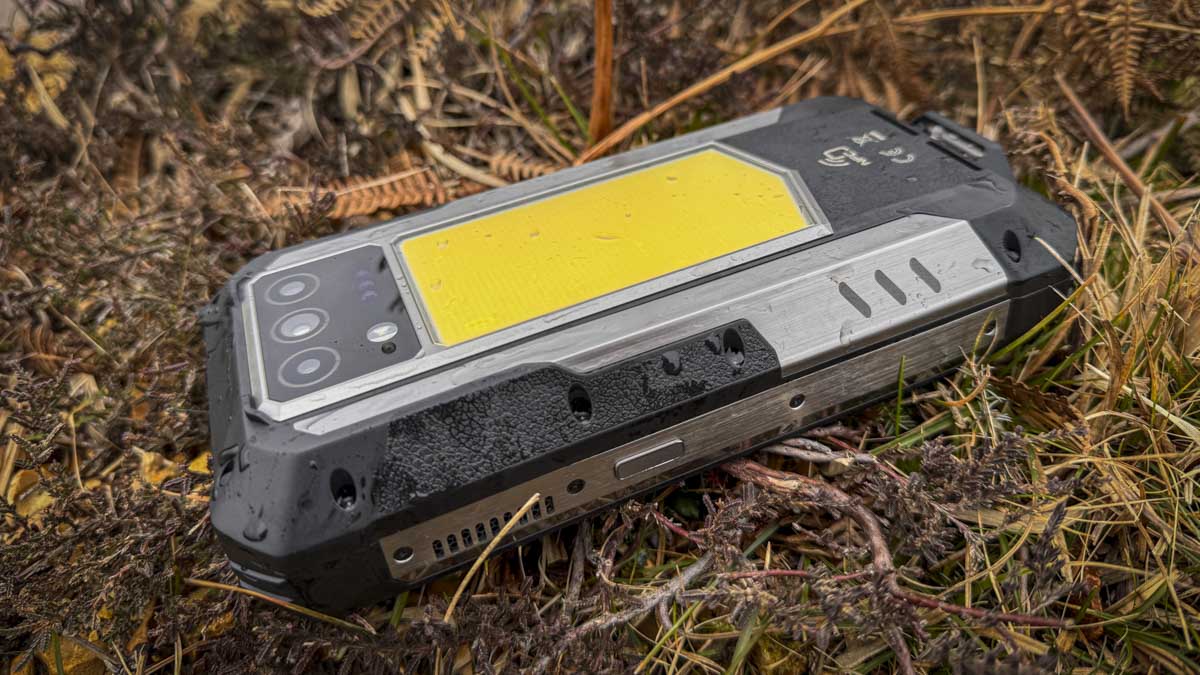
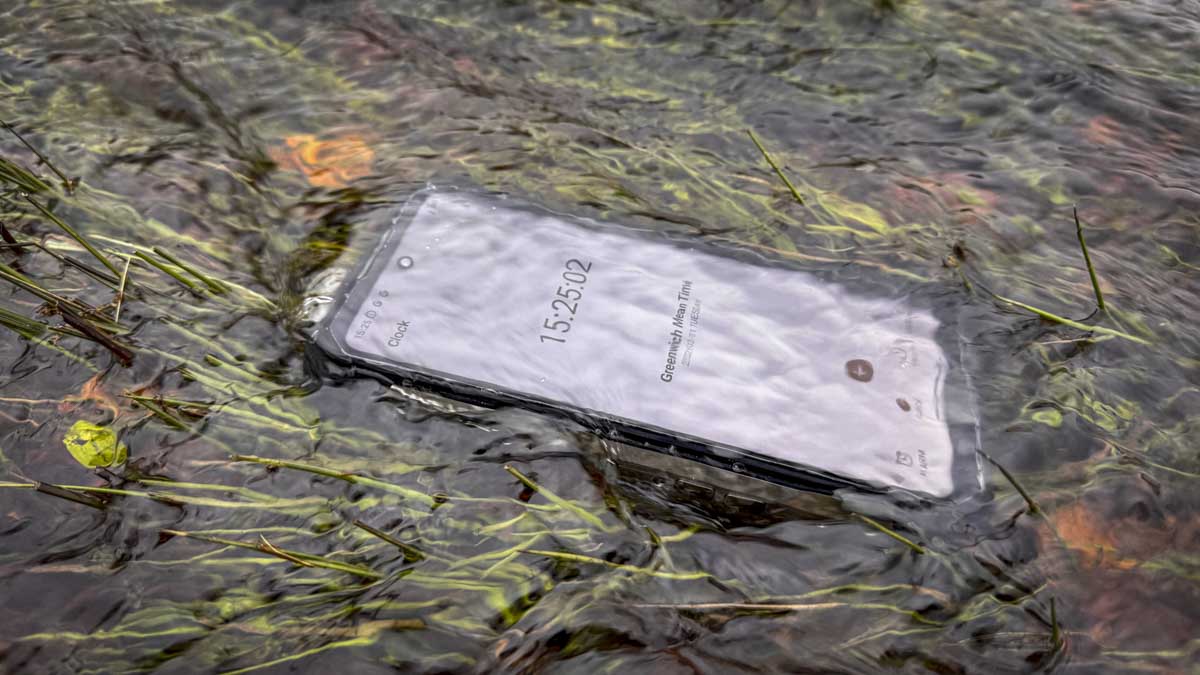
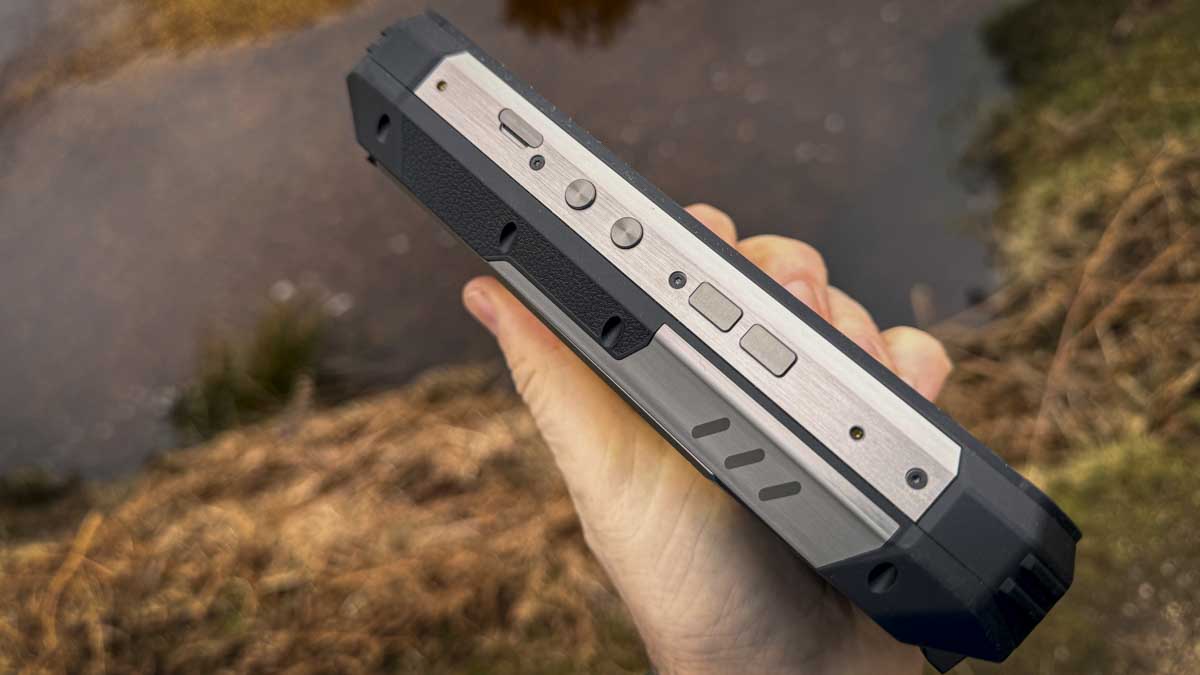
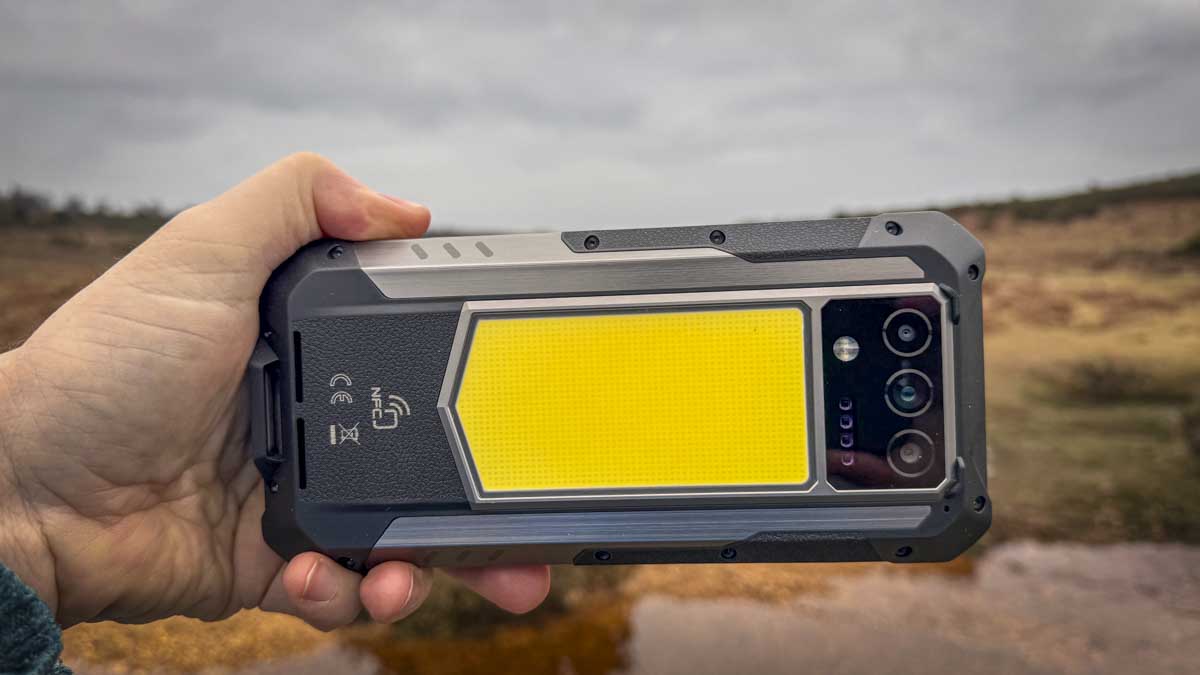
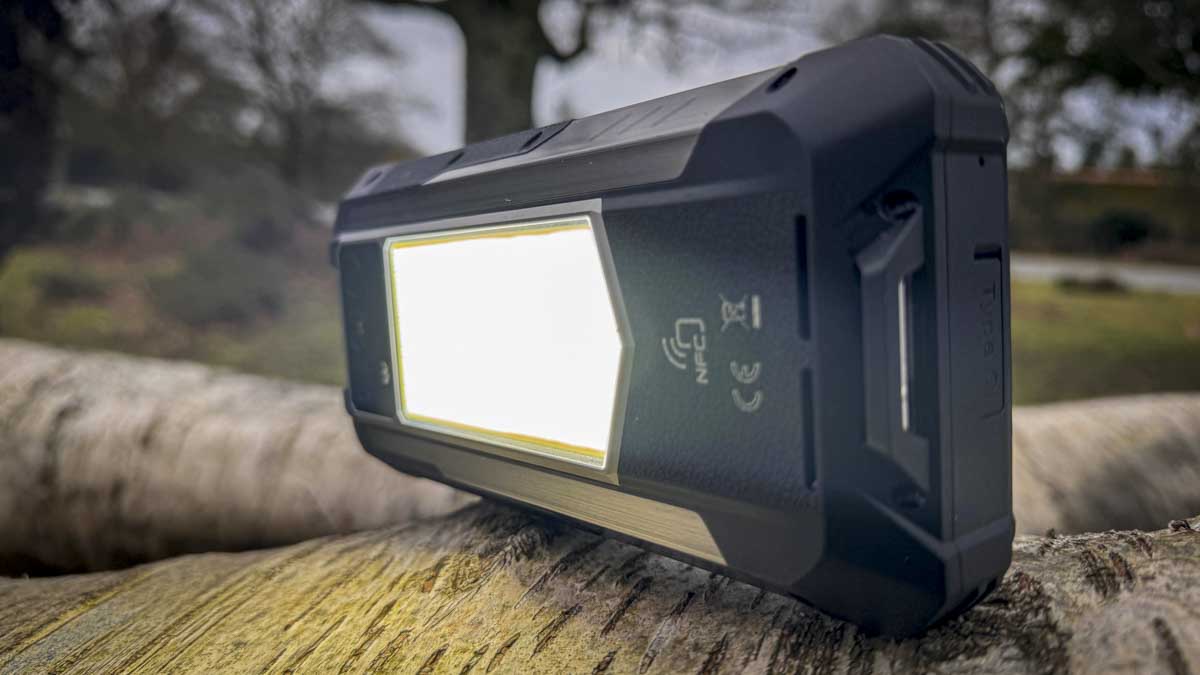


Specifications
Reasons to buy
Reasons to avoid
✅ You need the longest battery life: We were seriously impressed with the battery here, 33,000mAh lasts for weeks.
✅ You require a rugged phone with high-end cameras: There's a good selection on this device, including night vision.
❌ You want a compact phone: This is one of the bulkiest rugged phones available.
❌ Wireless charging is a must: This model doesn’t support it, which is a shame.
The Oukitel WP100 Titan is quite simply the Swiss army knife of rugged smartphones. It has an enormous battery, coming in at 33,000mAh battery, making it the longest-lasting phone battery in its class. But the impressive specs of this phone don't stop at the battery.
The WP100 Titan also has a built-in projector (yes, you read that right), a 6.8-inch FHD+ LCD with 12-Hz refresh rate, a MediaTek Dimensity 7300 chipset for smooth performance, 16GB of RAM and 512GB of storage, a 200MP primary camera, a 32MP front camera, a 2MP macro camera, a 20MP night vision sensor, IP68, IP69K, and MIL-STD-810H certifications, Dual SIM support with 5G, fingerprint and facial recognition, built-in thermal imaging, USB-C, 120W fast charging, a built-in FM Radio, a camping light, and it runs the newest AndroidOS.
On paper, this phone is absurd. It's the James Bond of smartphones. Granted, due to all of these features, it's pretty bulky. However, what you are getting in this package makes the hefty size feel reasonable.
Read our full Oukitel WP100 Titan review.
Best rugged phone with removable battery
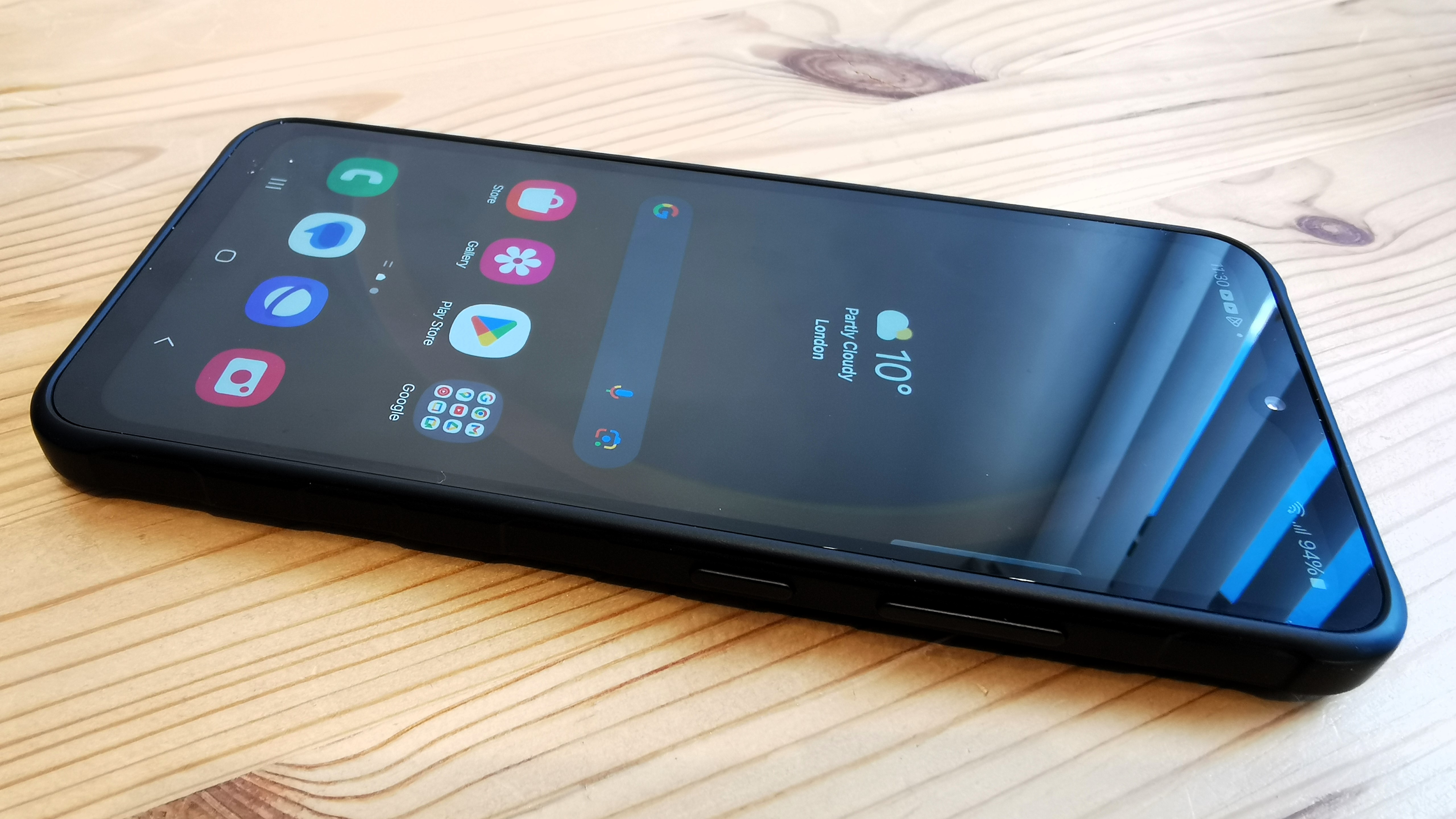
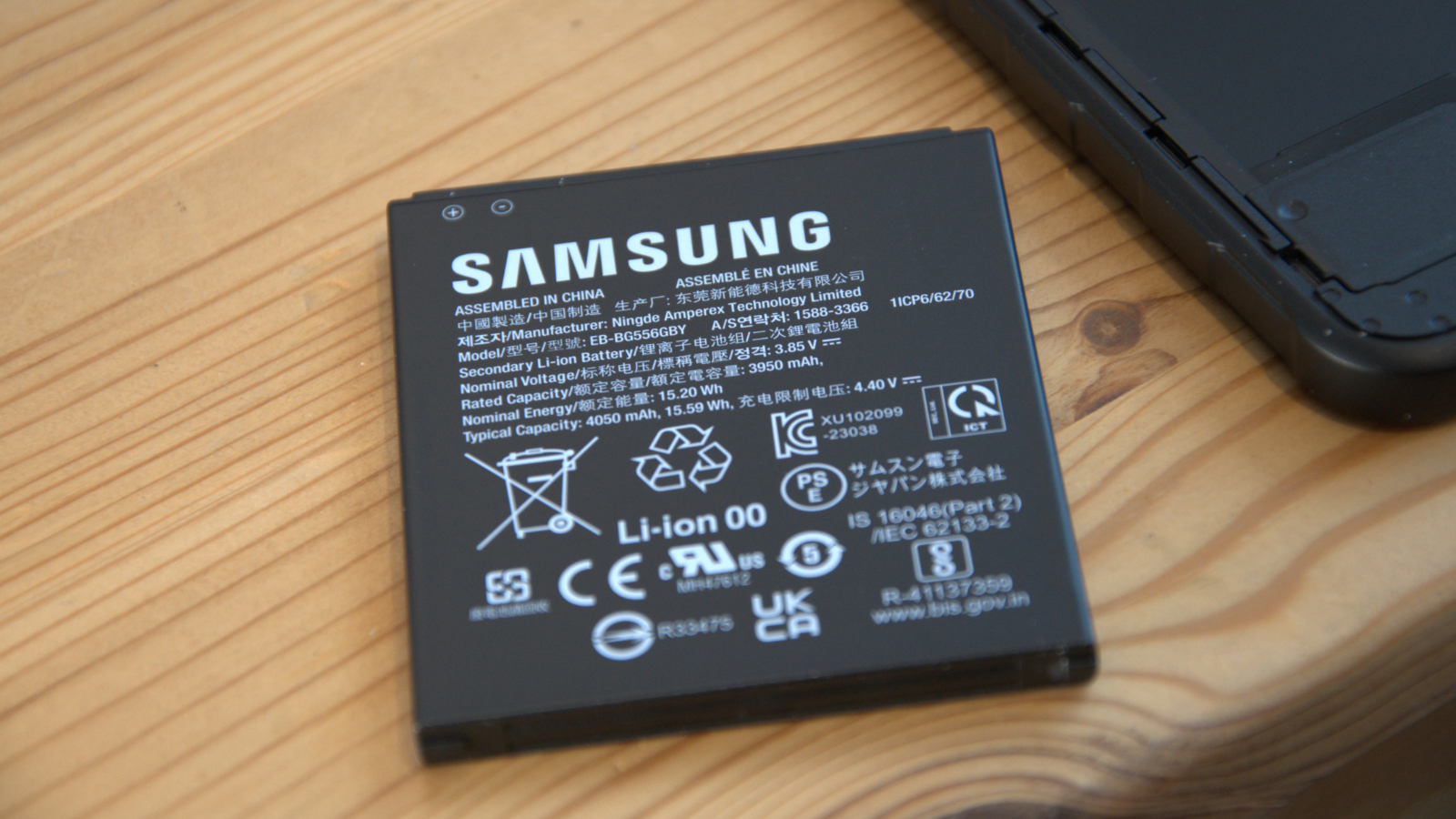
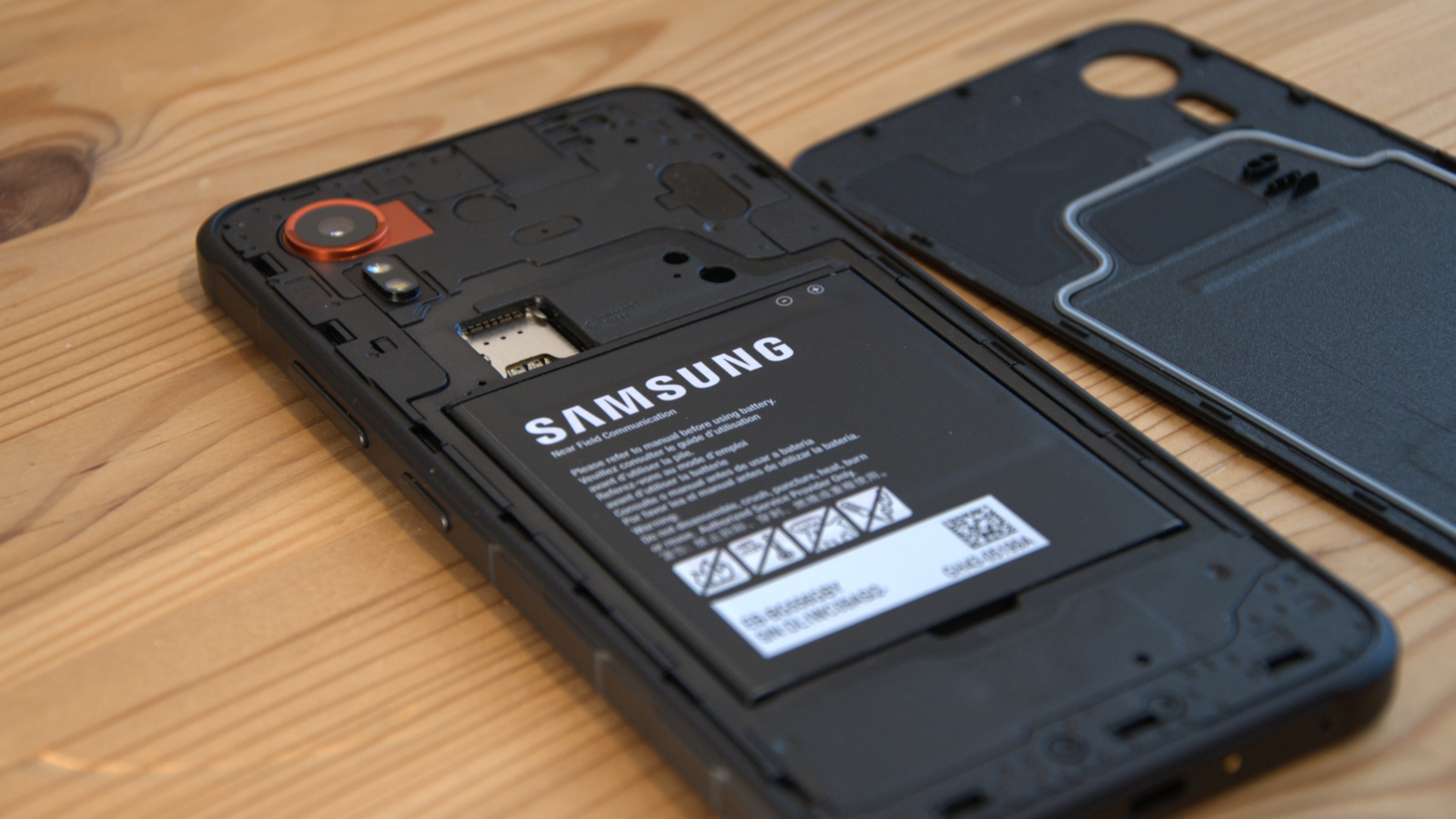
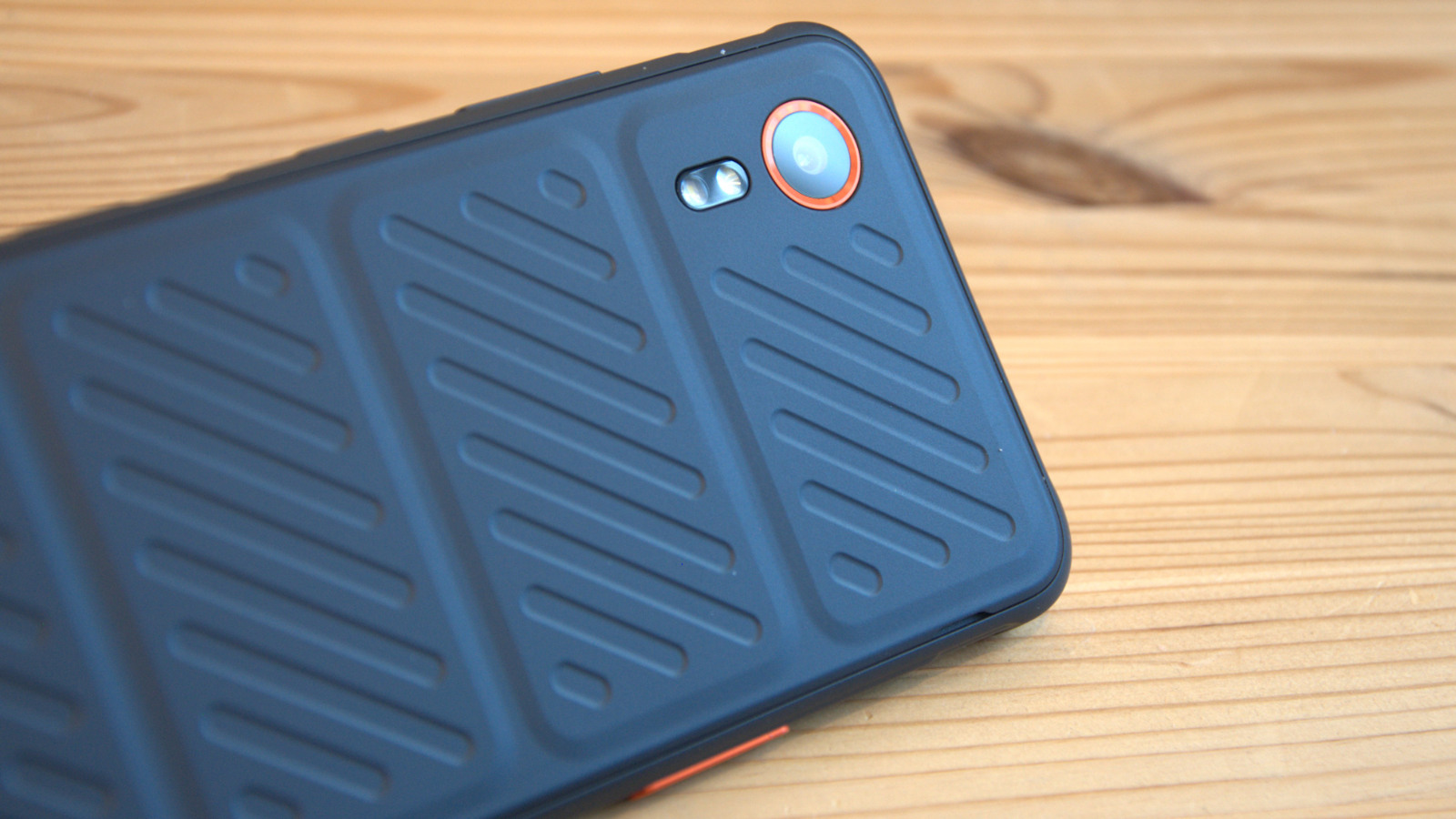
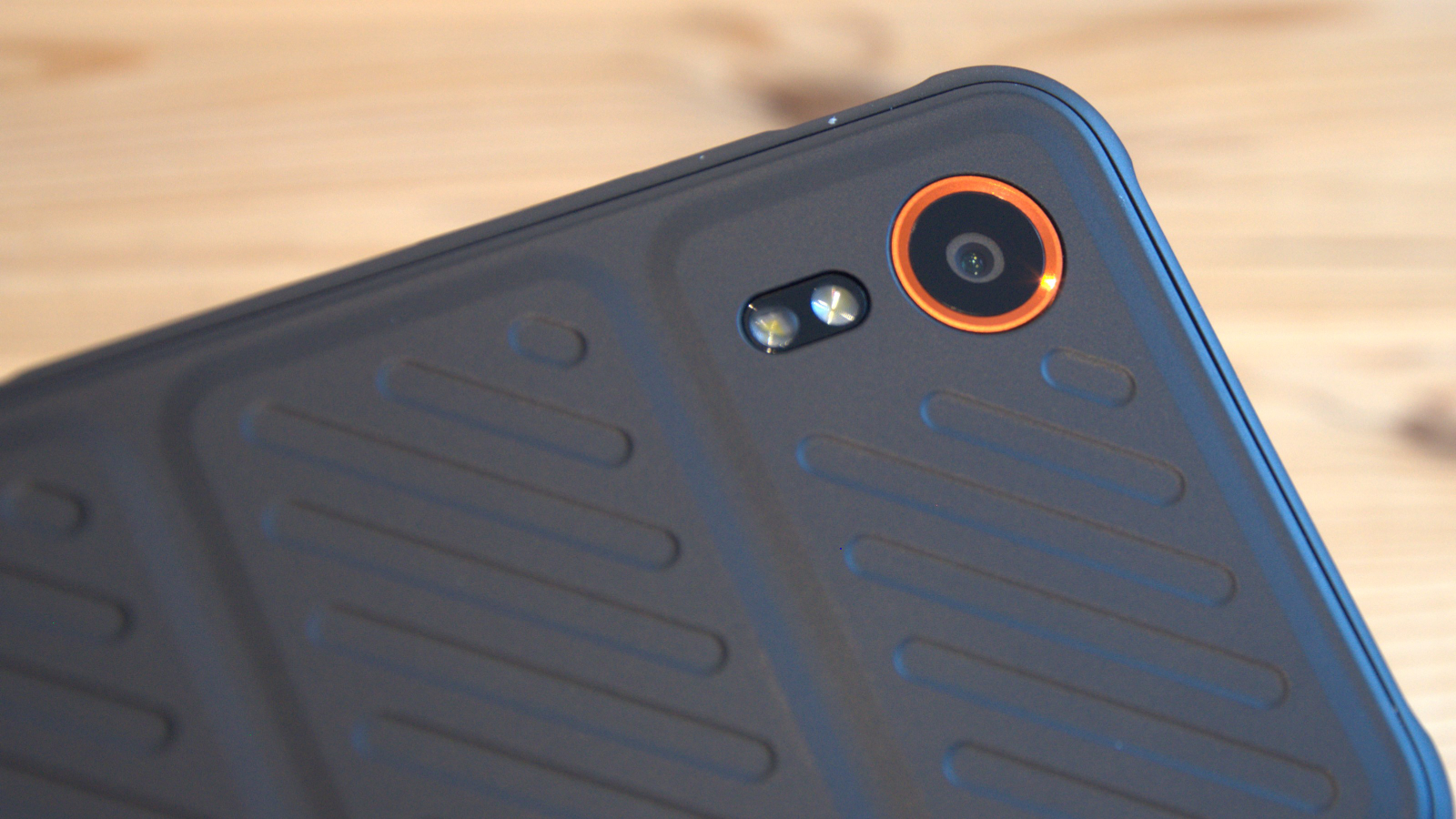
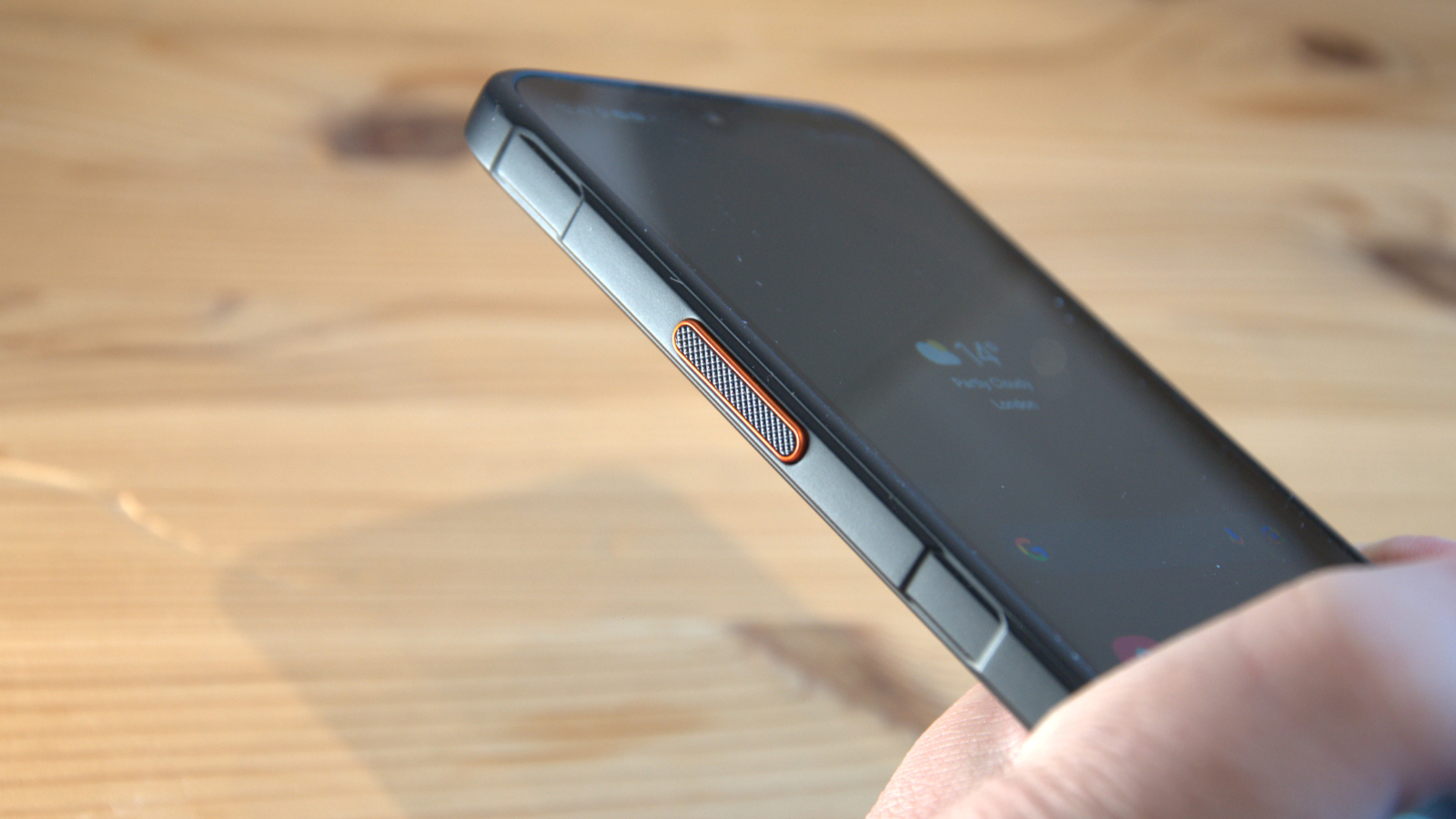
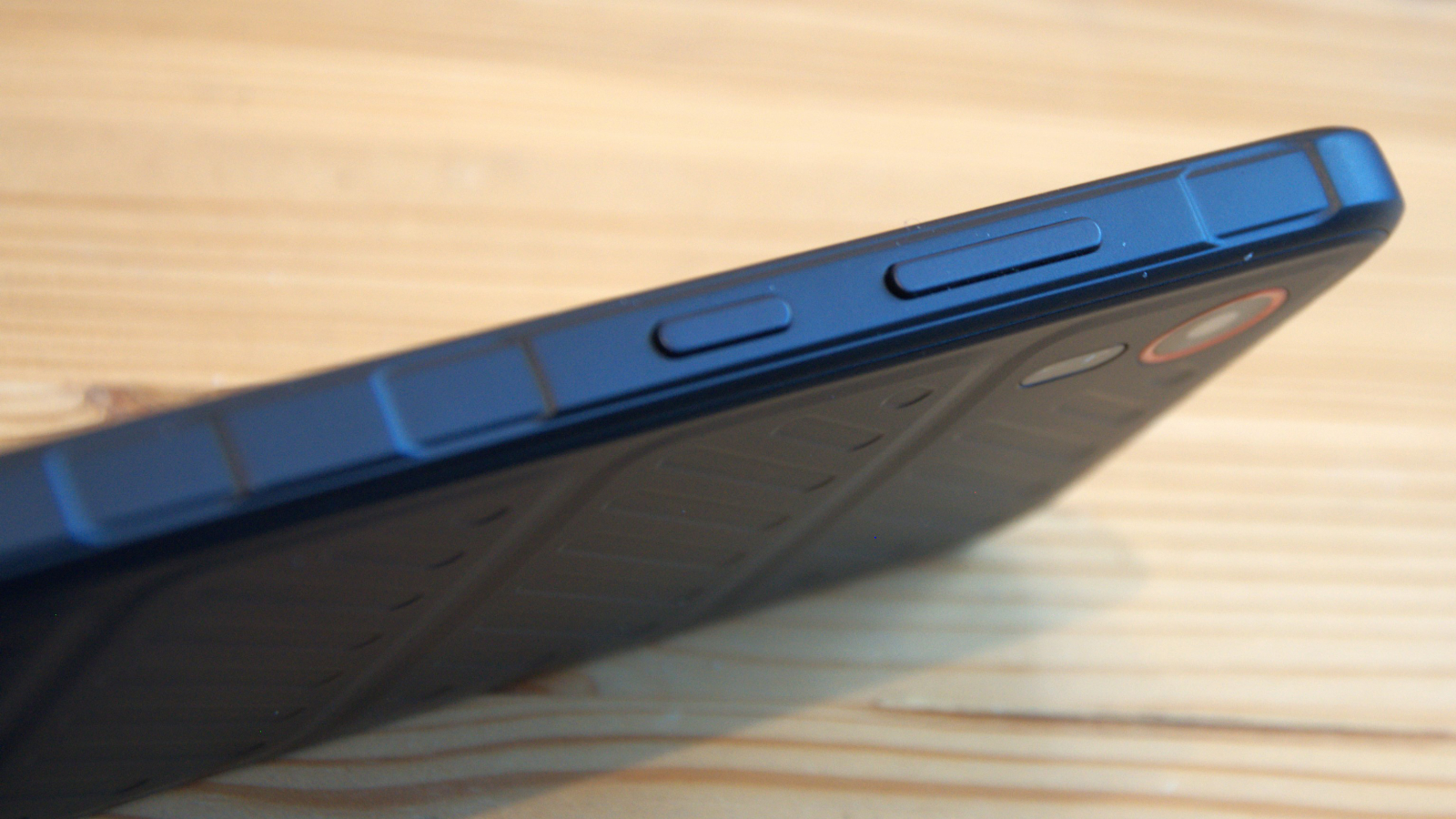
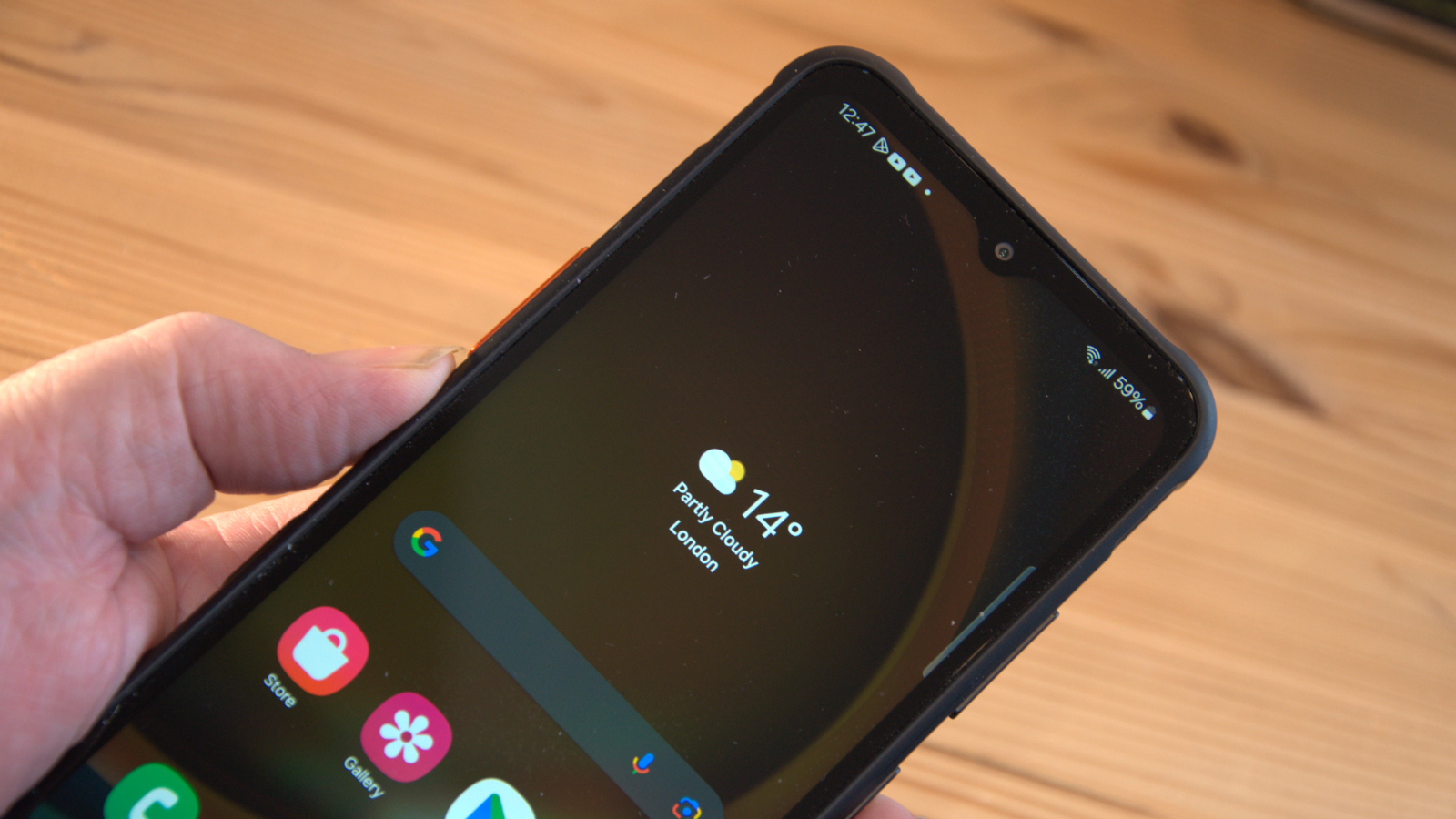
Specifications
Reasons to buy
Reasons to avoid
✅ You need a rugged phone with a removable battery: There aren't many phones, let alone smartphones, with the option to switch out the battery, but this is one of them.
✅ A lightweight rugged phone is important: Impressively, this robust phone weighs just 240g.
❌ You want wireless charging— Even though you can change batteries, there's no wireless charging on this phone.
❌ You need top-tier cameras: Cameras here are fine, but basic, with a 50MP rear and 5MP front camera.
The Samsung Galaxy XCover 7 is a beautifully designed rugged smartphone with a removable 4050mAh battery and 18W fast charging but no wireless charging. The XCover 7 packs in a MediaTek Dimensity 6100+ 5G processor under a 6.6-inch PLS LCD with a 60Hz refresh rate, IP68, and MIL-STD-810H rugged certifications, a 50MP primary camera, a 5MP front camera and 128GB of storage. While 128GB may be plenty for the casual user, you can expand the storage with microSD.
While so many rugged smartphones look like styled bricks, this one is clean-looking, taking design inspiration from more modern phones, not that of other rugged devices. That sleek design has also helped cut back on some added weight, pulling this smartphone down to only 240g, making this a great everyday phone.
Historically, phones with removable batteries were popular so that you could swap batteries for fully charged ones. However, now that this is far less common, you could still take solace in knowing that whenever this battery begins to degrade, you can swap it for a fresh one, keeping your battery life brand new even after years of heavy use and abuse.
If you are looking to save money on a Samsung product, check out our Samsung promo codes for the latest deals on top-rated tech and gadgets.
Read our full Samsung Galaxy XCover 7 review.
Best rugged phones: Frequently asked questions
What is a rugged smartphone?
A rugged smartphone is a device that is specifically designed to withstand harsh conditions and rough use. These types of smartphones typically have reinforced casings, water and dust resistance, and are built to military standards.
What's the difference between rugged phones and other smartphones?
First off, rugged phones and standard phones are really similar in a lot of ways. Internally, they're functionally identical to regular smartphones. Most typically run the Android operating system (at least until Apple releases its own line of iOS rugged smartphone), they have good front and rear cameras. They run on classic mobile CPUs, too, from the likes of MediaTek and Qualcomm. You'll also often see both rugged and regular phones protect screens with Gorilla Glass or similar.
The difference between a rugged phone and a regular phone is the outer-build. The very best rugged smartphones have reinforced casings and strength and IP ratings, which can ensure a device is protected from shocks, drops, falls, water, and dust. You may also see a phone labelled as being tested against MIL-STD 810 standards, which is a set of tests under extreme conditions, as used by the US military. It definitely doesn't mean the tablet is fit for combat, though - just everyday rugged smartphone use.
These devices are specifically built to withstand harsh conditions, hostile environments, and rough use when out in the field. For this reasons, they also tend to have a longer battery life and are more durable than regular phones - even one with a strong protective case.
Are rugged smartphones expensive?
The price of rugged smartphones can vary, with some models being more expensive than others. Generally, they tend to be more expensive than regular smartphones due to their enhanced durability and resistance to harsh conditions.
Are you a pro? Subscribe to our newsletter
Sign up to the TechRadar Pro newsletter to get all the top news, opinion, features and guidance your business needs to succeed!
Former TechRadar Pro B2B Hardware Editor, Collin has been in journalism for years, with experience in small and large markets, including Gearadical, DailyBeast, FutureNet, and more.
- Steve ClarkB2B Editor - Creative & Hardware
